HJ Kalikow & Co.









Few companies remain family owned for a century, yet as a leader of real estate development and management in New York City for almost 100 years, HJ Kalikow has endured as an outstanding presence in an unpredictable industry.


As one of the few surviving commercial real estate dynasties in New York, HJ Kalikow continues to look to the future to expand its legacy for generations to come.





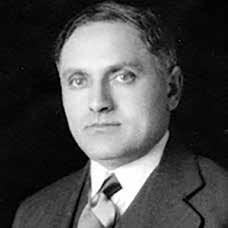
Harold
Kalikow Jul 3, 1909 - Jul 4, 1983
Juliet Citrin Dec 23, 1913- Nov 11, 2000
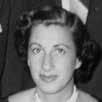


MARRIED SEPT 29, 1940
MARRIED JUNE 20, 1971


MARRIED 1978


Nathan Kalikow May 6, 1914 - March 30, 1989



MARRIED XXX
Lillian Kalikow April 8, 1916- April 11, 1937

Married Nov 17, 1935
Sidney Kalikow Feb 10, 1918- May 4, 1990



MARRIED XXX

OnDecember 31, 1899, Joseph Kulakovsky, a young Jewish man from the small village of Timkovichi in the Minsk Oblast of Russia (today Belarus), embarked on the S.S Numidian, traveling from Liverpool, England to the United States. He arrived in Portland, Maine on January 10, 1900, at the age of 17.
Joseph Kulakovsky (the family changed their surname to Kalikow upon arrival in the United States) settled on the Lower East Side of New York City. There he lived amongst relatives, as well as other Jewish immigrants from Timkovichi and the surrounding areas. Joseph Kalikow’s siblings and mother would arrive in New York in the following years to join the tight-knit community.
Like many immigrants eager to integrate into the American way of life, Joseph Kalikow took night classes to learn English. At the same time, he began working in the garment industry with his brothers.
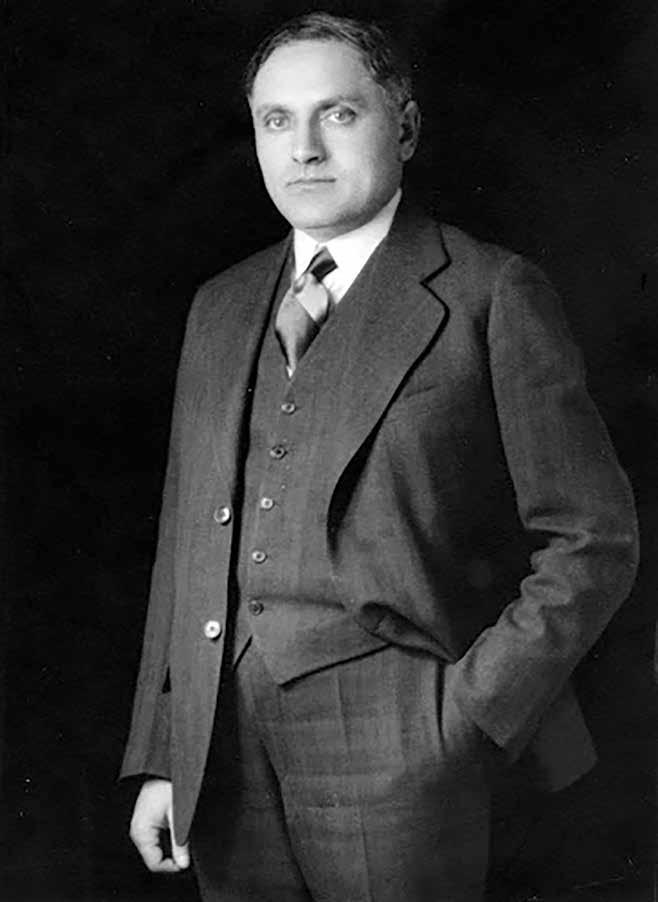
Built in 1891, by D.& W. Henderson Co. Ltd. in Meadowside, Glasgow, the S.S. Numidian was a British steel steamship used as part of the Allan Line Trans-Atlantic fleet. The Allan Line, originally founded by Captain Alexander Allan of Scotland in 1819, was a privately owned shipping company that operated steamships across transatlantic routes to and from ports in the UK (Glasgow, Londonderry, Belfast, Liverpool, and London), Canada (Quebec, Montreal, St. Johns, and Halifax) and the United States (Portland, Boston, New York, Philadelphia, and Baltimore) throughout the 19th and early 20th century. The S.S. Numidian had a carrying capacity of 1,180 passengers (100 first class, 80 second class, and 1,000 third class). On August 20, 1891, it made its maiden voyage from Liverpool to Quebec. Its final voyage was to Boston in 1914, before it was sold to the British army to be used as a block-ship (a ship that is deliberately sunk to block a channel of water) during World War I. Advertising for the Numidian, suggested that it was one of the lowest cost ways for migrants to cross the Atlantic at the time.

Passenger record for Joseph Kalikow, identified as Joseph Klekow, laborer, on the Numidian. The date of arrival matches Joseph Kalikow’s naturalization papers.

Joseph Kalikow’s original Petition for Naturalization (1911). The document shows Kalikow’s occupation, residence, date of birth, marriage status, as well as the dates of his voyage on the Numidian. He became an official citizen of the United States on April 5, 1911, eleven years after his arrival in the country.

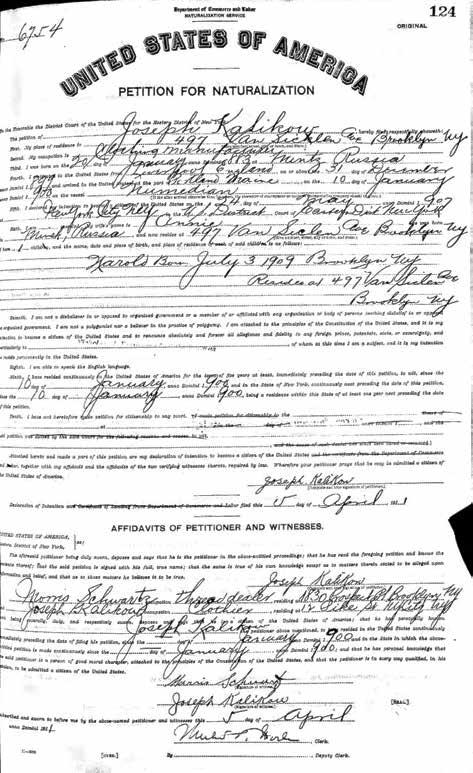
In June 1908, at the age of 25, Joseph Kalikow married his cousin Anna Kalikow. He was living at 16 Pike Street at the time and Anna at 12 Pike Street. One year later, on July 3, 1909, Anna Kalikow gave birth to their first son, Harold. The couple later had four more children: Mollie (Jan. 23, 1912), Nathan (May 6, 1914), Lillian (April 8, 1916), and Sidney (Feb. 10, 1918).

Over the next few years, Joseph Kalikow worked hard expanding his operations in the garment industry, earning a steady living for his family.
In 1910, Joseph and Anna, along with the rest of the Kalikow family, moved to 491-497 Van Siclen Avenue, Brooklyn. Here they continued to build strong ties with the Jewish community, particularly in Borough Park, where they were involved in several Jewish institutions and organizations. Then came 1914: a year that changed the history of the world as well as the history of the Kalikow family.
The 1900’s marked the Progressive Era in NYC, a period defined by an increase in reforms and government regulation in response to the scandal and corruption of the Gilded Age. During this time period the city population stood at more than 3.4 million (compared to one million in 1875) and continued to surge as development grew and immigrants fled to Ellis island, which had opened eight years prior, in search of political and religious freedom.
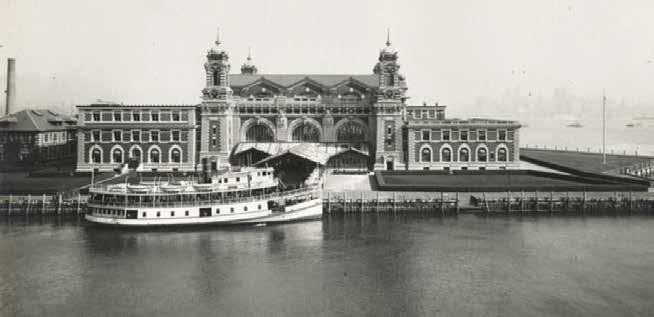
June 1902
The Flatiron Building, one of New York City’s first skyscrapers, is constructed. Designed by architect Danial Burnham, the unique triangular shape allowed the building to fit perfectly in the plot located at the intersection of Fifth Avenue and Broadway.

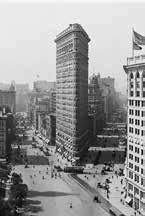
1902
Macy’s Department Store on Herald Square opens making it the world’s largest department store with 2.5 million square feet of real estate. It spreads an entire city block and boasts 11 floors.
April 22, 1903
The New York Stock Exchange building opens at a cost of $4 million. The trading floor was one of the largest volumes of space in the city at the time, measuring 109 feet by 140 feet, with a skylight set into a 72-foot-high ceiling.


December 20, 1903
The Williamsburg Bridge opens. At the time it was the longest suspension bridge in the world, carrying rail, trolley, carriages and pedestrians. The Williamsburg Bridge was one of the last major bridges designed for horse and carriage.
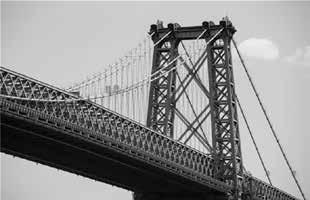
October 7, 1904
The first subway opens, launching its significance into New York City culture. Under Mayor George B. McClellan, the first line ran through 28 stations traveling at a speed of 9.8 miles, beginning in City Hall in lower Manhattan and finishing at 145th Street and Broadway in Harlem.
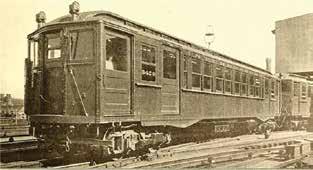
1904
The iconic One Times Square Building is completed. The 26-story building at the center of Times Square was originally built as the headquarters of The New York Times. In 1907, the first ever New Year’s Eve Ball Drop took place, becoming an annual New Year’s Eve tradition celebrated around the world.
At the onset of the First World War, Joseph Kalikow was presented with a unique opportunity. Kalikow knew the metric system from his childhood, allowing him to easily manufacture and fill the demands for Russian and French military uniforms.


By capitalizing on his organizational knowledge and expertise in the industry, Joseph Kalikow made substantial profits. With the money that he earned, Kalikow began investing in real estate and became a partner on several projects.
Enthralled by the new industry, he moved from the clothing trade in the early 1920’s, allowing other family members to buy out the business so that he could focus on property development full time.
After spending countless hours inspecting numerous construction sites, observing and learning the industry, he developed buildings on his own, founding the Kalikow Construction Corporation.
Joseph Kalikow began building in 1925 and completed his first project in 1926: a four-story apartment building in Bensonhurst, Brooklyn, a neighborhood that was growing exponentially at the time.
Because most of Bensonhurst had been developed as single family homes and there was limited space, developers had to find a way to accommodate the influx of families wishing to move there.
Joseph Kalikow, recognized the urbanization and development of Brooklyn, and continued to build apartment houses in the borough, positioning himself at the forefront of the profession there.
By the early 1930’s, Kalikow had developed more than seven apartment buildings. It was during this time that he moved his family out of their tiny apartment in East New York and into a large home located at 1415 55th Street in Borough Park, Brooklyn.
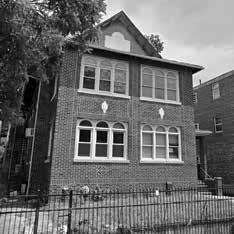
Kalikow’s professional aspirations, however, were brought to a halt as a result of the Great Depression.
1910
26 Bleecker Street: the site of Joseph Kalikow’s garment business in 1910. Today the location is used as a Planned Parenthood Office.
1925
1925 was a record breaking year in the history of the Building Department and Joseph Kalikow was at the forefront of the increasing real estate development in Brooklyn (The Brooklyn Daily Eagle, 1925).
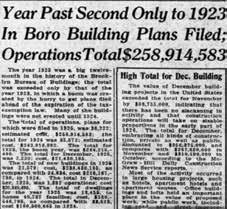
1925
A newspaper clipping listing Joseph Kalikow’s development plans for a four story apartment in Bensonhurst Brooklyn (The Brooklyn Daily Eagle, November 29, 1925).
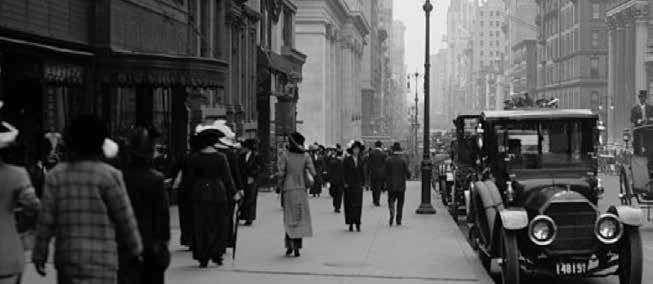
Throughout the 1910’s, New York City continued to evolve, both in population and infrastructure, reinforcing its status as the financial center of the country. During this time, major transportation hubs made the city more connected and accessible than ever before. the second half of the decade was characterized by World War I and the sacrifices of New Yorkers, both on the battlefield and the homefront, to support America’s efforts. At home, the city mobilized through industrial production and civic participation, while 500,000 men from New York went overseas to fight. 13,956 of those soldiers paid the ultimate sacrifice. However, the bravery and morale of New Yorkers played a pivotal role in the Allies eventual victory.
Need Caption here
November 27, 1910
The original Pennsylvania Station opens. In 1900, The Pennsylvania Railroad became the largest company in the world with more than 10,000 miles of track between the Mississippi River and New York. As part of an expansion project to connect the trains to Manhattan, called the New York Terminal and Tunnel Expansion Project, President of the corporation Alexander Cassatt builds Pennsylvania Station.
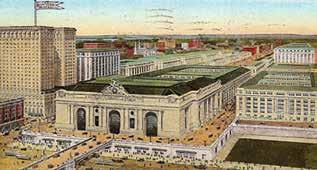

March 25, 1911
The Triangle Shirtwaist Factory fire takes place claiming the lives of 146 innocent workers. It remains the deadliest industrial disaster in the history of New York City. The fire brought mass attention to the dangerous working conditions in factories and prompted new legislation enforcing better safety standards and regulations for workers.

February 2, 1913
Grand Central Terminal opens to the public at midnight after ten years of renovations. 150,000 New Yorkers from all over the city visited the new transportation hub on its opening day.
July 28, 1914
World War I begins. New York factories start producing military equipment and munitions, shipping them out through the city’s ports.
April 2, 1917 1918
Under President Woodrow Wilson, Congress declares war on Germany and the United States officially enters into World War I. After four years of bloodshed, the war ends on November 11, 1918. The Allies declare victory and The Treaty of Versailles is signed on June 28, 1919.
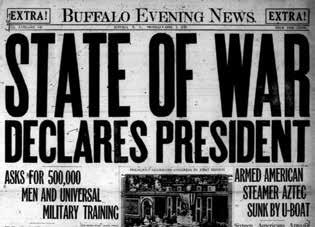
As soldiers return home from war there is another deadly battle being waged: The 1918 Influenza pandemic. The deadly disease kills 50 million people worldwide: 675,000 Americans, and more than 20,000 New Yorkers.
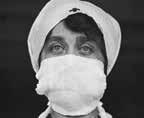
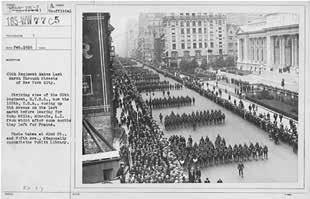
The Kalikow Family Circle was an organization founded by the Kalikow family in 1921, in Borough Park, Brooklyn. The Circle was organized for the purpose of bringing together and strengthening ties among the Jewish families in the community. Galas like the one being advertised, were held as a way to celebrate The Circle and promote philanthropy. The proceeds from the events were donated to local Jewish organizations including the Hebrew Institute of Borough Park. Joseph Kalikow served on The Kalikow Family Circle Board of Trustees along with his brothers and cousins.
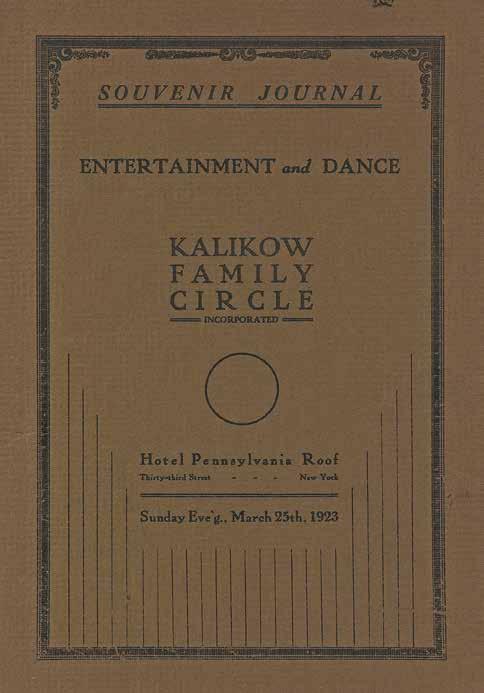
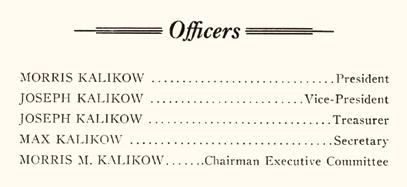
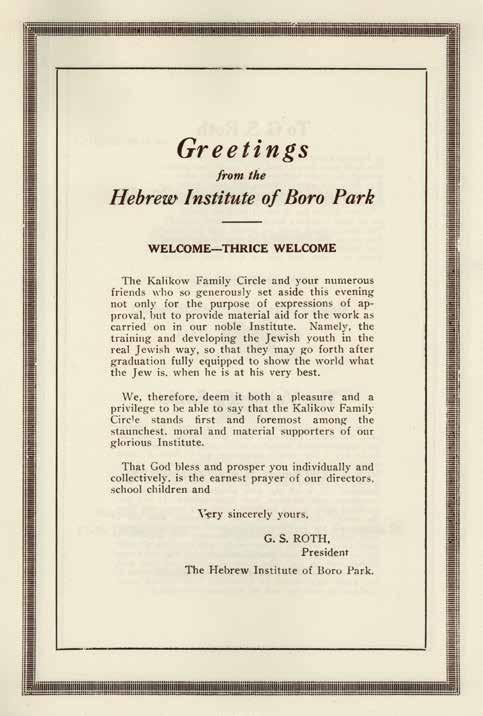
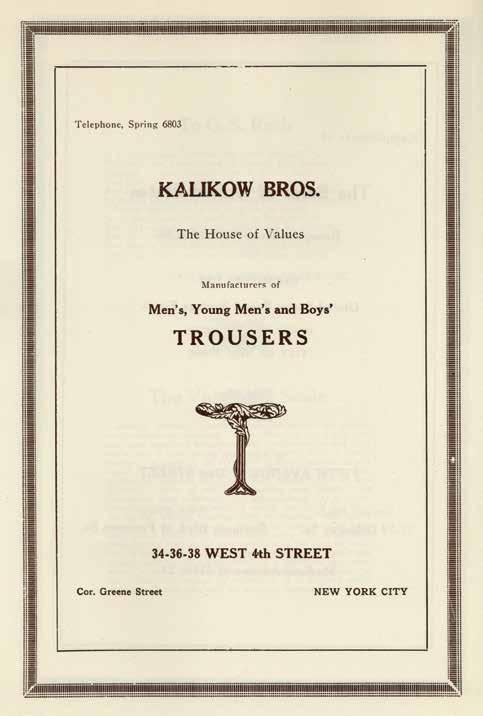

After the stock market crash of 1929, many of Joseph Kalikow’s tenants were financially ruined and could not afford to pay their rent, leading the banks to foreclose on most of Kalikow’s properties. With only one building left in his portfolio and little cash on hand, he was unable to continue developing real estate.
One fortunate meeting helped Joseph Kalikow restart his construction projects.
According to Peter Kalikow, Joseph Kalikow’s grandson, a successful businessman in the community, Fred Kronish, owned a coal delivery company around the time of the crash. Like Joseph Kalikow, Kronish, a Jewish immigrant, had gotten his start from the garment industry upon his arrival in America.
In 1929, just months before the stock market crash, Fred Kronish sold his company and traveled to Europe, minimizing the financial effects of the crash on him. Upon his return, he bought the Bensonhurst National Bank, which was run by President Nathan A. Barell.
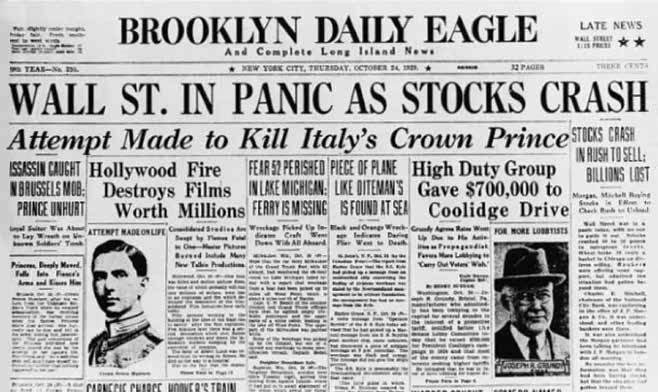
Kronish, eager to dive into real estate, asked Barell to connect him with Joseph Kalikow, whom Barell referred to as the best builder in the business.
Fred Kronish and Joseph Kalikow struck a deal that the Kalikows refer to as the “Kronish Deal.”
Kronish agreed to finance development projects and Kalikow would be responsible for building them in exchange for a 50/50 split of the profits.
As partners, the duo began developing apartment buildings together throughout Brooklyn, completing their first in 1935: 711 Brightwater Court, followed by 140 Eighth Ave (1936); 260 Ocean Parkway (1938); The Clarkson (1938), and many others.
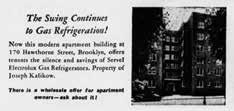
The six-story apartment buildings were modern for the time, featuring efficient automatic elevators, at a time when standard four-story apartment buildings did not have them. Other innovative features of these apartments included carriage rooms (storage rooms in the building for strollers and bicycles), large windows situated near the kitchen rather than the dining room, and modern appliances.
1938
Fred Kronish was a distinguished businessman and leader in the Borough Park Community throughout the early 20th century (The Brooklyn Citizen, November 9, 1938).

19??
Joseph Kalikow (far right) in the middle of a conversation with business associates.

1941
An advertisement for the latest Servel Electrolux Gas Refrigerators installed in one of Joseph Kalikow’s Brooklyn apartment buildings at 170 Hawthorne Street (The Brooklyn Daily Eagle: June 19, 1941).
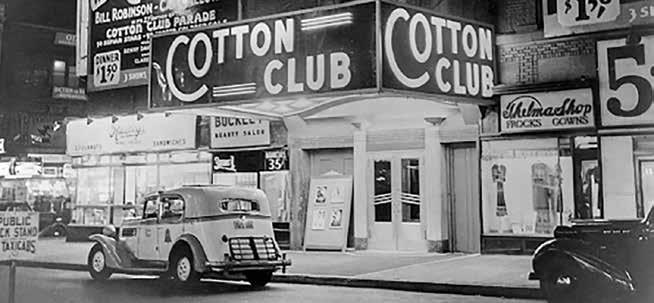
The Roaring Twenties were booming with financial prosperity in New York City due to technological advances, the mass production of goods, the emergence of mass marketing, and access to cheap credit. During the start of the decade, the population in NYC was almost 6 million residents. Immigrants and migrants alike arrived in large numbers helping to sustain the growing economy. In the wake of Prohibition, speakeasies, which were often controlled by organized crime members: another prominent feature of the decade, came about offering people a refuge to drink, dance, and take in the live music of the jazz age. The city was a cultural hotspot bursting with entertainment, art, and sports.
Need Caption here
1920
April 30, 1921
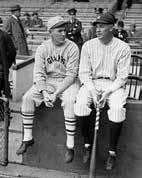

October 10, 1923
November 27, 1924
Macy’s holds their very first Thanksgiving Day Parade down Broadway. The parade, which was called the “Christmas Parade” that year, was arranged by Macy’s employees who emigrated to the United States from Europe and wanted to host a similar celebration to that in their home countries.

November 13, 1927
October 24, 1929
The extravagance of the 1920’s comes to an abrupt end when the stock market crashes on what is infamously known as Black Monday. It would soon spiral the country into a ten year long economic depression known as the Great Depression.


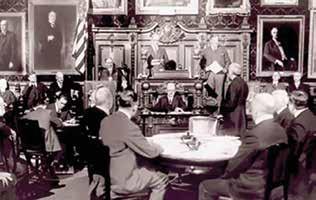 The Harlem Renaissance begins and African American culture and art is revived in Manhattan.
The Holland Tunnel is opened to traffic. It was the longest underwater vehicular tunnel in the world at the time.
The Port Authority of New York and New Jersey is founded. The Yankees win their first World Series, beating the New York Giants to claim victory.
The Harlem Renaissance begins and African American culture and art is revived in Manhattan.
The Holland Tunnel is opened to traffic. It was the longest underwater vehicular tunnel in the world at the time.
The Port Authority of New York and New Jersey is founded. The Yankees win their first World Series, beating the New York Giants to claim victory.
It was during the early 1930’s that Harold Kalikow, Joseph’s oldest son, joined his father and began to take a prominent role in the company. Joseph’s middle son, Nathan, and youngest son, Sidney, would also take on roles within the family business in the decade to come.
In time, Joseph Kalikow turned his ambitions to Queens, buying expansive tracts of empty farmland to develop, particularly in Forest Hills. Most of that land was split in partnership with Fred Kronish, but Kalikow kept some land exclusively for himself, including a tract of land in Briarwood.
After completing almost a dozen buildings together, Joseph Kalikow and Fred Kronish ended their business relationship, because Kalikow desired to work without outside partners.
1938
A sales brochure for The Clarkson (1938), listing its special features.


 Kalikow Family Dinner
Top row from left to right: Joseph Kalikow, Abe Citrin, Harold Kalikow, Milton Levine, Unknown, Sidney Kalikow. Bottom row from left to right: Rose Citrin, Juliette Kalikow, Alaine Levine, Pearl Kalikow, Marjorie Kalikow).
Kalikow Family Dinner
Top row from left to right: Joseph Kalikow, Abe Citrin, Harold Kalikow, Milton Levine, Unknown, Sidney Kalikow. Bottom row from left to right: Rose Citrin, Juliette Kalikow, Alaine Levine, Pearl Kalikow, Marjorie Kalikow).
The Great Depression was the most severe economic collapse in the history of the United States. It also significantly impacted countries around the world that were part of the modern industrial economy. From 1929-1939, New Yorkers and Americans suffered great hardships. Unemployment reached an all-time high and the number of people without homes and jobs soon became too overwhelming for the government and its resources to manage. Homeless people in large cities resorted to building their own houses from any available materials. These small shanty towns known as Hoovervilles, named after the president at the time, Herbert Hoover, began popping up in vacant lots and alleyways. At the height of the Great Depression, three of these small villages existed throughout New York City, with the largest one occupying Central Park’s Great Lawn. In the winter of 1932-1933 an estimated 1.2 million Americans were homeless, 2,000 of whom were New Yorkers. For those who were fortunate enough to continue working, development proceeded and more iconic city landmarks were constructed.
Need caption here

April 11, 1931
The Empire State Building opens making it the tallest building in the world at the time.
October 25, 1931
The George Washington Bridge opens. During the first full year of operation, more than 5.5 million vehicles used the original six-lane roadway. The bridge measured 4,760 feet long with a main span of 3,500 feet making it the longest main bridge span in the world until the Golden Gate Bridge in San Francisco opened in 1937.
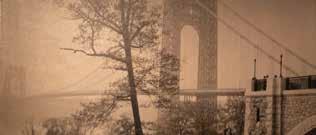
December 27, 1932
Radio City Music Hall opens as part of the construction of Rockefeller Center. The four-tiered auditorium featuring 5,960 seats, becomes the world’s largest indoor theater.
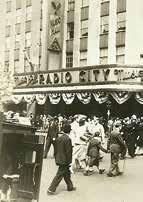
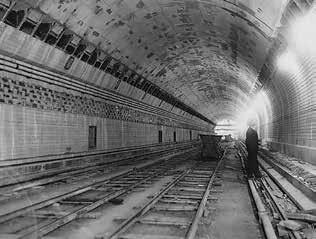
1933
The RCA building, today known as 30 Rockefeller Plaza, opens as the centerpiece of the Rockefeller Center in Midtown Manhattan. The same year the first official annual Rockefeller Center Christmas Tree lighting ceremony was held.
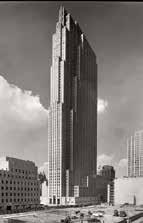
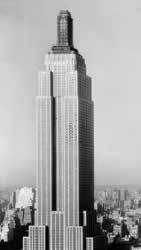
December 22, 1937
April 30, 1939
The New York World’s Fair held in Flushing Meadows, Queens, has its grand opening with over 200,000 people in attendance. The date was chosen to commemorate the 150th anniversary of George Washington’s inauguration in Manhattan.
 The first tube of the Lincoln Tunnel opens to traffic making transit between NYC and Jersey easier.
The first tube of the Lincoln Tunnel opens to traffic making transit between NYC and Jersey easier.
The Israel Zion Hospital, later known as the Maimonides Hospital after a merger with Beth Moses Hospital in 1947, played an instrumental role during the outbreak of the 1918 flu epidemic.
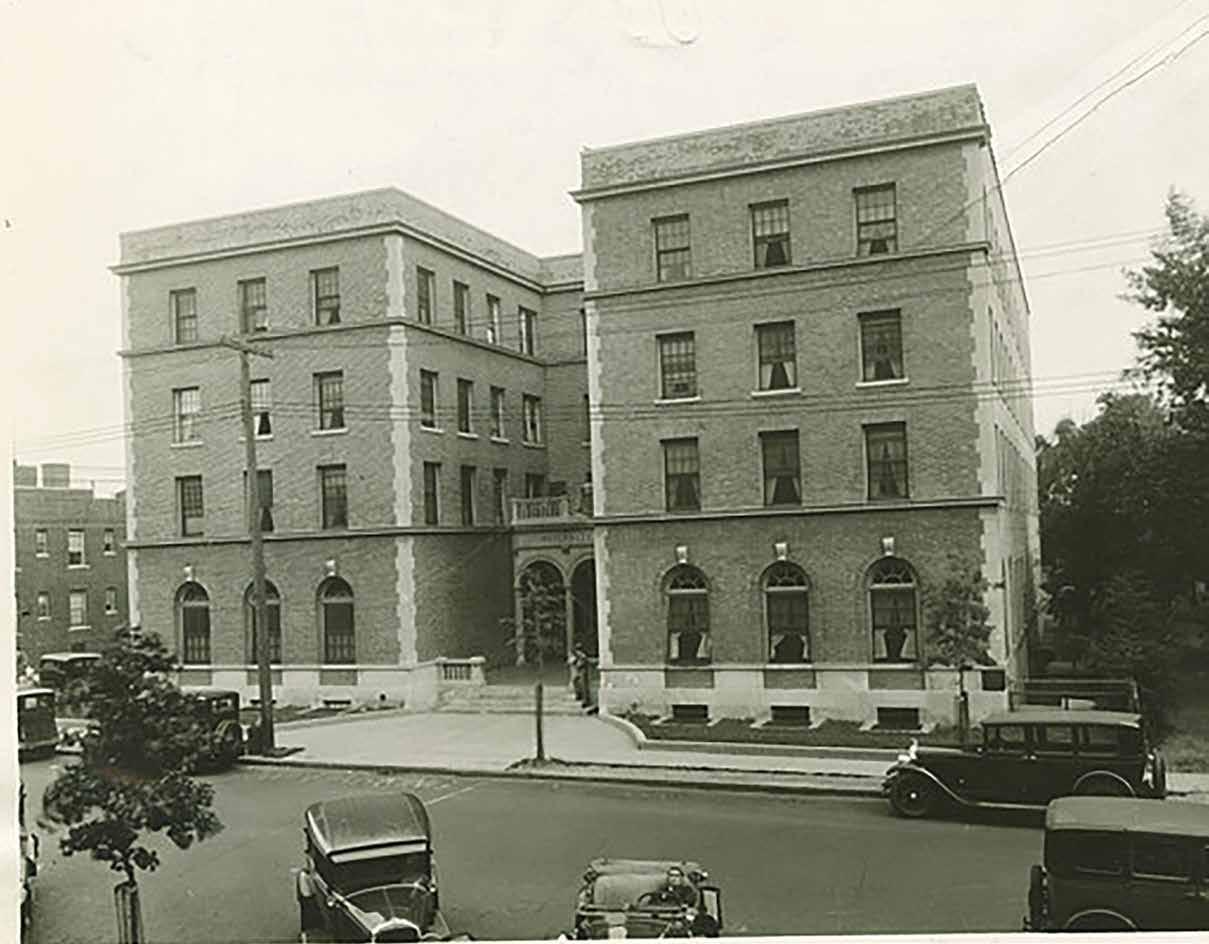
The Kalikow family and others in the Brooklyn real estate industry were heavily involved in Jewish philanthropic causes, donating substantial funds and serving in prominent roles within these organizations: a principle instilled into the later Kalikow generations.
Kronish and Kalikow assumed leadership positions in many of the same Jewish organizations and institutions such as the Israel Zion Hospital1 and the Borough Park Hebrew Institute2.
Joseph was elected as a director of the Israel Zion Hospital in 1931, and in 1933, he served as chairman of the building committee for an annex to the maternity pavilion. Kronish served a term as president of the hospital in 1939.
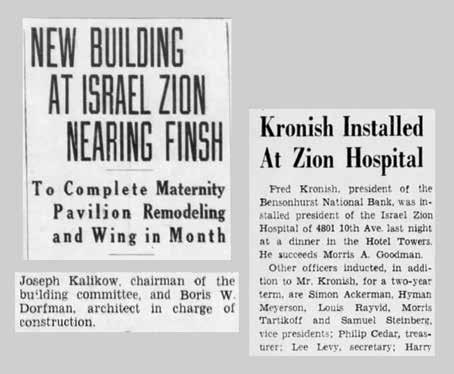
From1941 to 1942, Joseph Kalikow developed three luxury apartment buildings on part of his land in Forest Hills (Mayflower, Normandy, and Lafayette3)
At the start of World War II, the War Production Board directed the use and production of resources and goods for the war efforts. Thousands of private companies were mandated to comply with government requirements and pivot their specializations.
As a result, in 1941, government officials directed the Kalikows to complete any buildings under construction and gave them a contract to build housing for workers at defense installations in Pennsylvania and New Jersey.

The program ended after two or three housing developments. However, with military construction demand skyrocketing, all nonessential civilian production and building was halted, and the Kalikows could not continue private real estate development.
Instead, they opened a packing facility.
1942
The Normandy and Lafayette buildings were named after the 1930’s French ocean liner the SS Normandie, regarded as the largest and fastest passenger ship at the time. During WWII, U.S. officials took hold of the ship in New York and renamed it USS Lafayette before it caught on fire and capsized while being converted to a troopship in 1942.
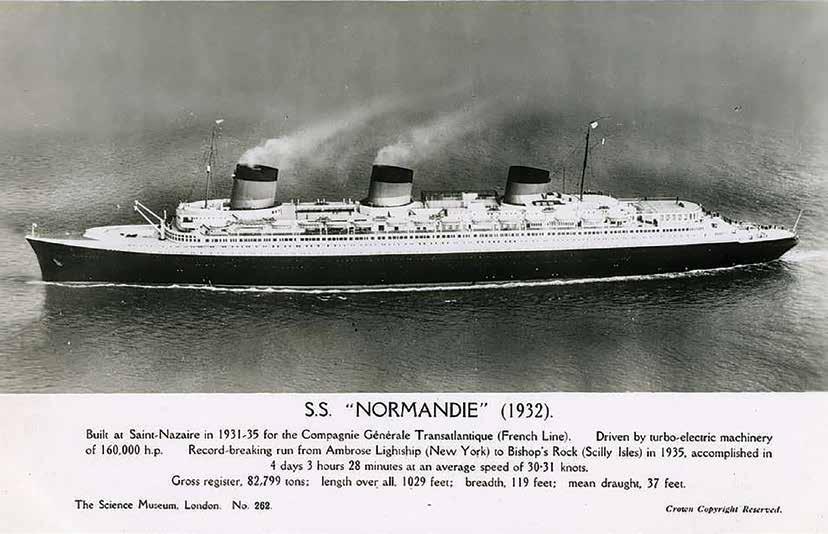
1942

A sales brochure for the Lafayette featuring an illustration of the building.

When wartime contractors produced parts for military equipment and machinery, they would ship them out to smaller distribution sites. There, shipments would be sorted and repacked.
Together Harold and Nathan Kalikow managed the packing plant, and their youngest brother Sidney began to manage existing properties.
On March 12, 1943 Harold Kalikow was drafted4 into the Navy. At 33, he was enrolled in the Marine Corps, and said goodbye to his wife Juliet Citrin (m. September 29, 1940) and newborn son Peter (b. December 1, 1942).
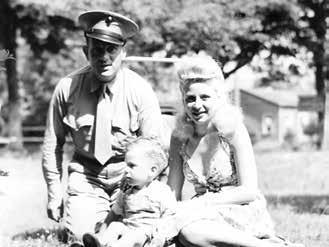
In Harold’s absence, brothers Nathan and Sidney managed the company.
1940
Congress enacted the Selective Training and Service Act in which all males between the ages of 21 and 35 were ordered to register for the draft. As World War II progressed, the draft age was lowered to 18 and men were called to service not by lottery number but by age, with the oldest going first.
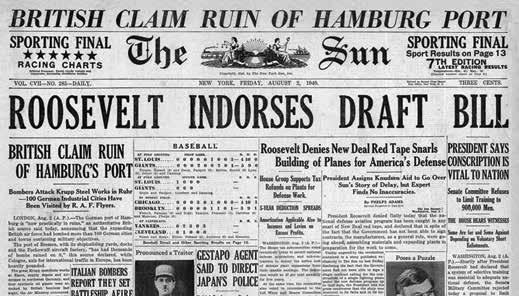
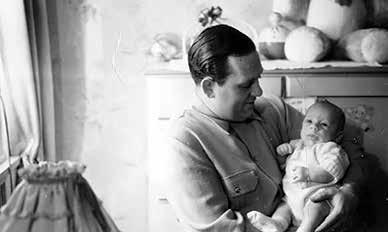


After completing Marine Corps training, Harold Kalikow worked in the Quartermaster Corps (QMC) supplying essential supplies and meals to soldiers in the 1st Marine Division. He continued to serve until doctors detected a heart murmur in the aftermath of a Jeep accident. Kalikow was pulled from duty and discharged to the U.S. Naval Hospital in Dublin, Georgia on December 15, 1945.
Members of the 1st Marine Division in which he served were awarded the division’s first Presidential Unit Citation from the Secretary of the Navy, Frank Knox, and President Franklin D. Roosevelt, for the Guadalcanal Campaign5 fought in the Pacific Theater between 1942 and 1943.
Although he did not actively fight in the campaign, Kalikow was still recognized for his contributions along with the rest of his unit.
1943
An original copy of the Presidential Unit Citation given to the First Marine Division by President Roosevelt and signed by Secretary of the Navy Frank Knox.
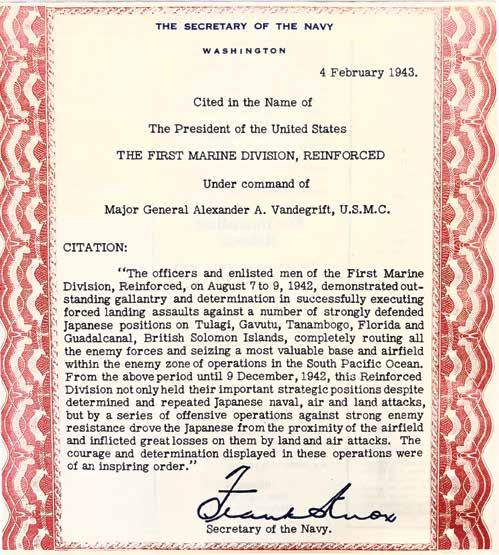
The Guadalcanal campaign, led by the U.S. Marines, was the first major land offensive of the Allied powers, against Japan. It represented a turning point in the Allies’ operations from defensive to offensive and gave them the strategic advantage over Japan in the Pacific Theater.
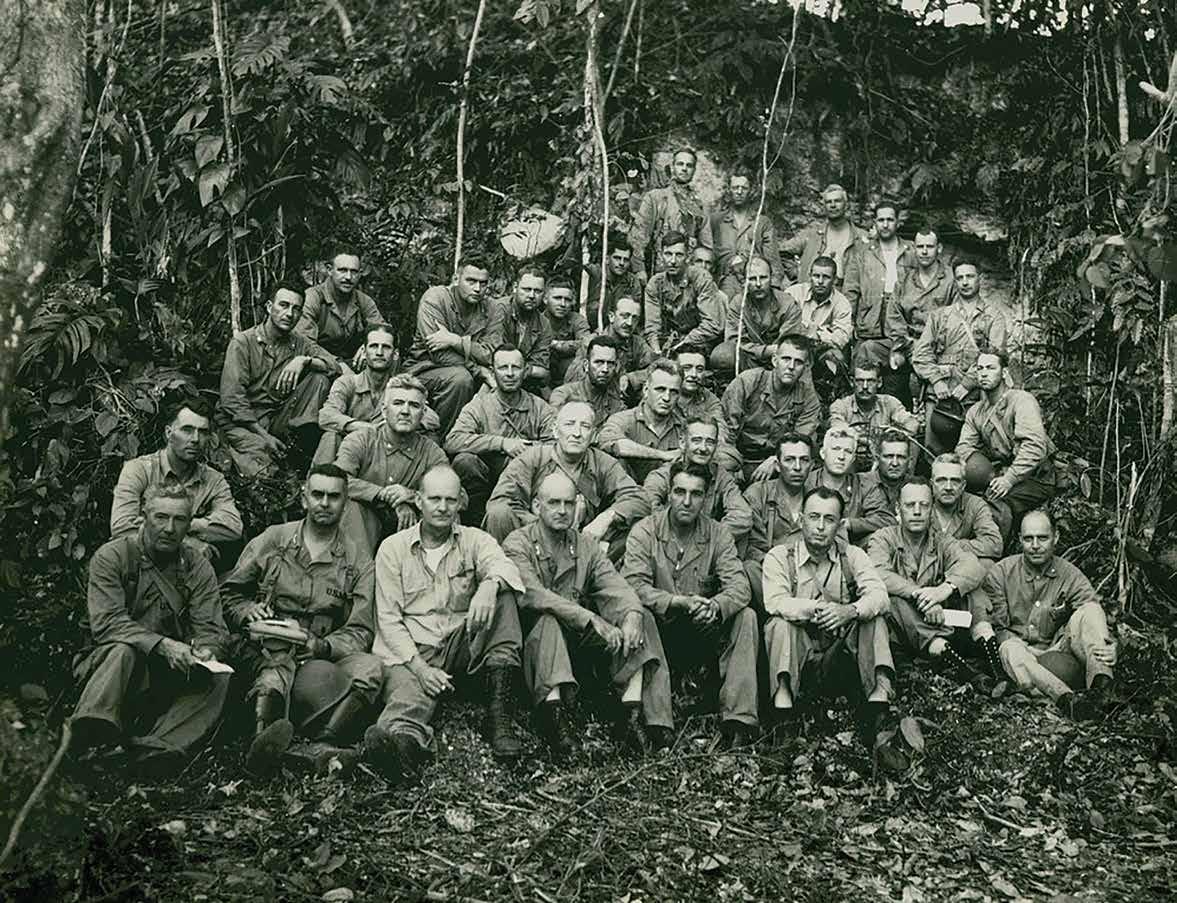
At the start of the 1940’s, World War II was in full swing. As the global conflict heightened, it became clear that the United States would not be able to maintain their neutrality. Upon America’s official entrance into the war, New York City transitioned into a wartime economy stimulating a much needed explosion of economic activity and productivity which helped to lift the impoverished city and nation out of the Great Depression. As a result, the nation’s unemployment rates decreased from 24.9% at the height of the Great Depression in 1933 to 1.2% in 1944. As a dominant port city, New York became an integral location for launching troops and storing weapons, supplies, and fuel to support the war effort. Every capable citizen regardless of ethnicity or class assembled to lend their services. Approximately 900,000 New Yorkers served in World War II, with 27,659 of them losing their lives. Following the end of the war, the city, along with the rest of the nation, continued their financial recovery ushering in a new decade of prosperity.
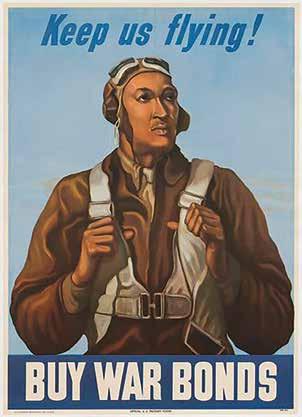
December 7, 1941
The Japanese attack Pearl Harbor and the very next day Congress declares war on Japan. Troops begin to mobilize and America officially enters the war on December 11th.
June 22, 1944
The G.I. Bill, formally known as the Servicemen’s Readjustment Act of 1944 is signed into law in an effort to reward soldiers returning from war. The return of soldiers along with the affordable housing offered to them through the bill prompted a major housing boom.


April 1947
Jackie Robinson breaks the color barrier in sports becoming the first African American to play in the major league baseball when he is drafted as a first baseman for the Brooklyn Dodgers.
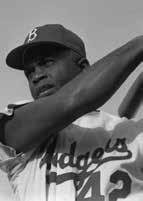
September 2, 1945
World War II officially comes to an end following the dropping of the Atomic bomb on Japanese cities, Hiroshima and Nagasaki.
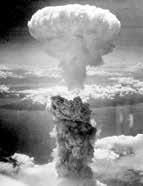
December 26, 1947
A record breaking snowstorm hits NYC resulting in the accumulation of 26.4” of snow and leaving 77 people dead in its wake.
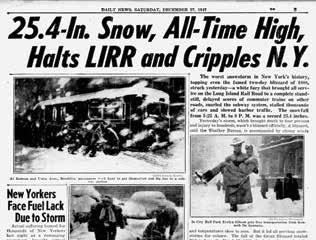
July 1, 1948
The first flight leaves from Idlewild Airport, in Queens, later renamed John F. Kennedy Airport after the president’s assassination in 1963. The international airport was built with the goal of being the world’s largest and most efficient.
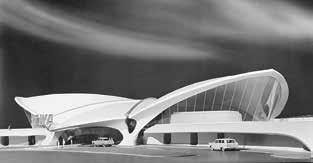
Atthe end of the war, the G.I. Bill, offering affordable housing for veterans, triggered a massive housing boom and the Kalikow family rebuilt their real estate business.
The Kalikows had ample land to develop because Joseph Kalikow had purchased the tracts of land in Queens inexpensively prior to the war. Kalikow Construction Corporation completed its first post-war apartment building, Hyde Park, in 1948 in Forest Hills, followed by the nearby Cromwell, in 1951.
When the Forest Hills buildings were completed, the family turned their attention to the land that Joseph Kalikow had purchased years earlier in Briarwood, Queens. Though Harold Kalikow wanted to build more high-end, residential apartments as they had done in Forest Hills, Nathan and Sidney Kalikow believed it would be too financially risky. The disagreement caused conflict among the brothers.
Joseph Kalikow died in 1955 at the age of 72, leaving the business to his sons. Harold Kalikow officially took over as president and the brothers split the shares into three equal parts.


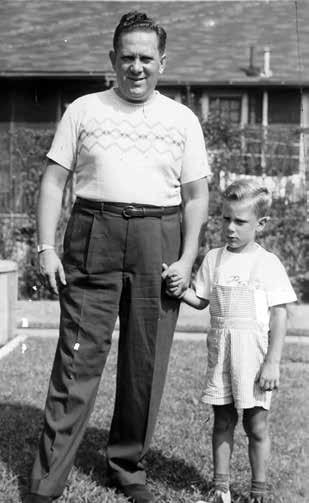
The Kalikow Construction Corp. logo, which appeared on the advertising brochures for Joseph Kalikow’s apartment buildings. It is unknown where the date 1914 comes from in reference to “Builders Since 1914.”
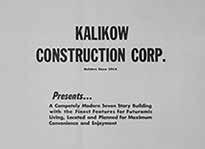
Although Joseph Kalikow and Fred Kronish stopped developing properties together years before, they continued to co-own and manage the properties they built under their partnership. After Kalikow’s death, Kronish wanted to dissolve that partnership with the Kalikow sons by dividing up the properties.
The apartments in Brooklyn and Queens were split up between Kronish and Harold Kalikow.
According to Peter Kalikow, Harold’s negotiation to end up with ownership over the buildings he did, particularly those in Queens, “spoke to his real estate instincts,” knowing the value of development in Queens would continue to rise in the years to come.
Despite competing views on development and the future of the company, the brothers continued to work together for the next ten years. They finished development of their Briarwood tract as well as tracts in Queens, including Kew Gardens and Flushing.
Throughout the 1960’s, the company owned and managed over 50 properties housing 6,000 families. As a husband and father who understood the needs of families, Harold Kalikow was able to design and build apartments that appealed to the growing population of families moving out to the suburbs.
Like most of Joseph Kalikow’s apartment buildings, Hyde Park was located directly near a subway station making it a desirable place to live due to the ease of transportation.
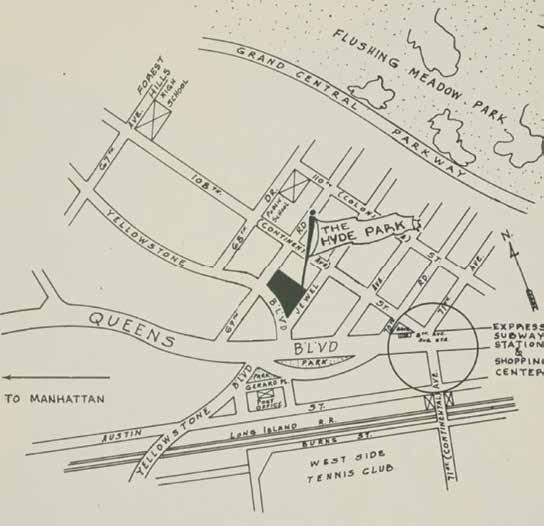
1955
An advertisement for The Amherst and The Carlton in Kew Gardens, Queens.
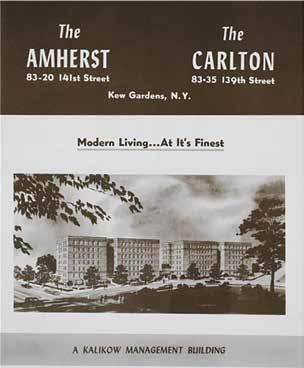
1965
An advertisement for The Imperial in Flushing, Queens.

1948
Anna Kalikow passed away in 1948 due to a heart condition. Joseph Kalikow passed away in 1955.
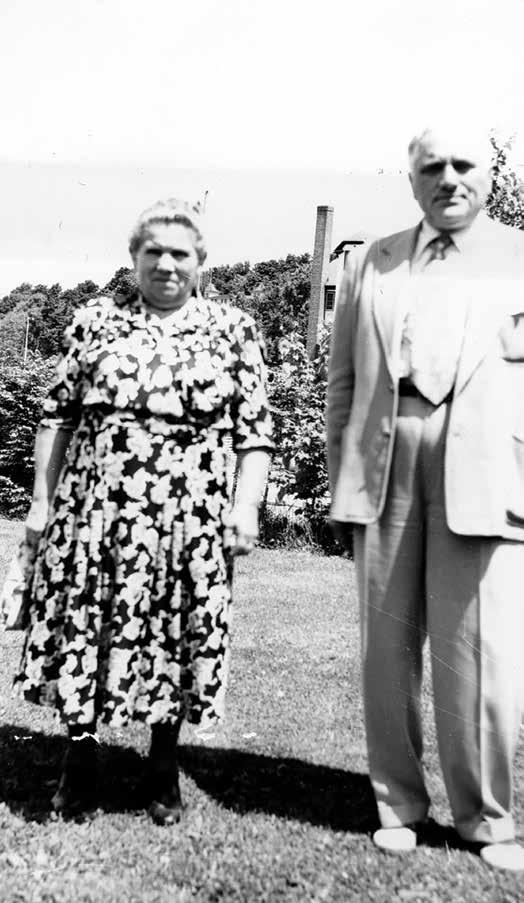
1965
An advertisement for The Barbizon in Flushing, Queens.
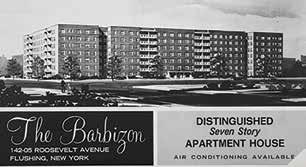
Following World War II, the United States entered into a consumer society driven by the thriving postwar economy. The prosperous environment led to a housing boom as the average household income increased and home ownership rose. While city residents sought affordable housing and wanted to escape the crowded neighborhoods and decay that was left from the Great Depression, developers began building new single-family neighborhoods outside of Manhattan, known as the suburbs. Suburbanization spread quickly throughout New York City and local citizens and industries alike left for new opportunities. The city’s population started to decline, setting off spikes in crime and a growing wealth inequality that left large populations struggling to survive in the wealthy city. Despite the conditions, New York City still remained strong as a mecca for jobs and culture and saw plenty of growth in the forms of new museums, buildings, and the flourishing entertainment scene. At the beginning of the 1950’s Manhattan was the center of the American music industry, hosting headquarters for major record labels like RCA, Columbia, and Decca; Midtown was home to the world’s most iconic jazz clubs, and moviegoers packed the theaters that filled Times Square. The city was also home to three major baseball league teams (Brooklyn Dodgers, New York Yankees, New York Giants) during the sport’s golden era, making it one of the most exciting places to be.
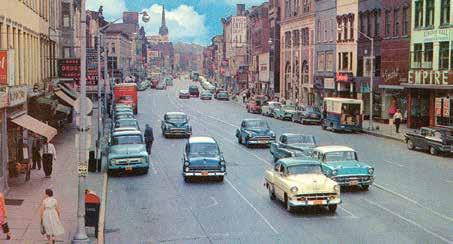
February 8, 1950
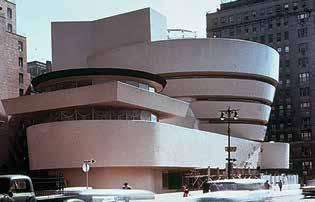
After forgetting cash to pay the bill at dinner one evening, NYC businessman Frank McNamara founded Diners’ Club and invented the first modern-day credit card, The Diner’s Club Card.

December 15, 1950
The Port Authority Bus Terminal opens after two years of construction at the cost of $24 million. Today, it serves as the world’s busiest bus terminal.
October 10, 1952
The United Nations Headquarters in Manhattan is officially completed after several years of construction and a $65 million budget.
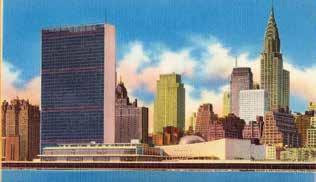
November 12, 1954

Ellis Island is shut down by the United States government after more than 60 years. Opening in 1892, as the nation’s first federal immigration center, Ellis Island welcomed more than 12 million immigrants into the United States. Approximately 40% of all Americans today can trace their ancestry back to Ellis Island.
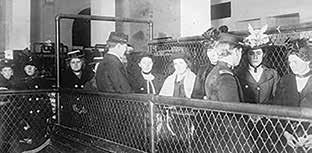
October 4, 1955
The Brooklyn Dodgers win the World Series against the New York Yankees, marking their only series win in Brooklyn before relocating to Los Angeles at the start of the 1957 season.
October 21, 1959
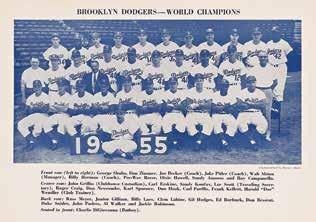 The Solomon R. Guggenheim Museum, designed by architect Frank Lloyd Wright, is opened on Fifth Avenue.
The Solomon R. Guggenheim Museum, designed by architect Frank Lloyd Wright, is opened on Fifth Avenue.
In 1965, after graduating from Hofstra University with a degree in business administration, Harold’s son Peter joined the family business. He was reluctant to work for the company at first, and agreed to try it out for one year. Peter was quickly disillusioned after only being given “busy work” and little say in the decision making. He had grander dreams for the company and envisioned building larger buildings in Manhattan, something his uncles were not interested in pursuing.
Richard Kalikow, Peter’s cousin (Nathan’s son), joined the company at the same time and agreed with this vision. Peter Kalikow gave his father an ultimatum in August of 1966, urging him to break off from the company to start their own. Harold Kalikow, who was also disappointed with the direction of the company after his father’s death, and feeling hindered by his brothers, agreed to separate. Together Peter and Harold Kalikow hired Lawrence “Larry” Peirez, a former Chief Assistant District Attorney in Queens, and senior partner at the law firm Peirez, Karmiol & Rosenthal. William Ackerman, a junior partner at the firm, also assisted them.
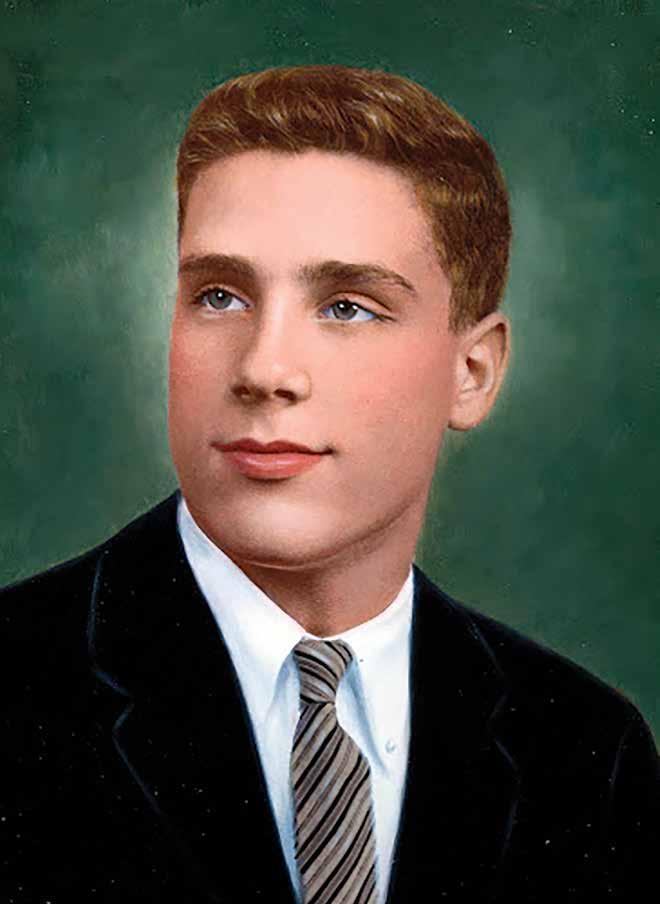

 Peter and his mother, Juliet at her 20th anniversary celebration to Harold Kalikow.
Peter and his mother, Juliet at her 20th anniversary celebration to Harold Kalikow.
Peter Kalikow cites his mother Juliet’s support as one of the motivations for his move forward.


“She was one of the smartest people I know and she had faith in me,” said Kalikow.
The division of the company became official in 1967. The company’s assets were divided into three equal packages, one for each brother. Harold and Peter Kalikow took ownership of most of the buildings in Queens as well as the title of the Kalikow Construction Corporation (formed under Joseph Kalikow), assets that proved to be quite favorable in the long run.
Peter Kalikow learned a great deal about business and negotiation from his lawyers, Peirez and Ackerman, skills he refined as he continued his real estate career. Harold and Peter established H.J. Kalikow & Co., and set out on their own.
Peter Kalikow cites his mother Juliet’s support as one of the motivations for his move forward.

“She was one of the smartest people I know and she had faith in me.”Harold and Peter Kalikow attend the 1964 New York Democratic State Convention.
The 1960’s marked the start of a steady economic and social decline in New York City that reached a precipice at the turn of the 1970’s. As immigration laws eased, a new wave of immigrants moved into the city, particularly from Asia and Latin America, turning the metropolis into one of the world’s greatest cosmopolitan cities. At the same time, the postwar population migration of mostly white, EuropeanAmericans out of the city, resulted in the gradual decrease of traditional factory jobs. Along with the reduction of manufacturing jobs, came the deterioration of blue-collar neighborhoods, opening them up to crime and drugs. The second half of the decade were defined by social and political strife. City residents fighting for all causes began protesting and striking in the name of change, whether it be in opposition to the ongoing Vietnam War, or in support of The Civil Rights Movement, The Gay Rights Movement, worker’s rights, and other forms of repression and violence. Despite the turmoil, New York City was still a city full of life and culture.

The Mets formed as part of the National League’s first expansion of the twentieth century. The team replaced the void left by the previously departed New York baseball teams the Brooklyn Dodgers and the New York Giants. The Mets colors blue and orange were incorporated from both the blue of the Dodgers and Orange of the Giants.

1962
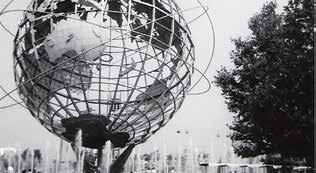
1964
1965
The New York World’s Fair is held for the second time in Flushing Meadows Corona Park, Queens. The fair and its theme, “Peace through Understanding,” was symbolized by a 12-story steel rendition of the Earth called the Unisphere, which still stands today. The fair, which ran for two six month stretches, showcased the newest technology of the second half of the twentieth century, including the earliest computers.
The Harlem race riot breaks out over a period of six days following the fatal shooting of James Powell, a 15-yearold African American boy, by Lieutenant Thomas Gilligan, a white off-duty police officer. 4,000 New Yorkers joined in the riots leading to violent clashes with the New York City Police Department and leaving 118 injured, 465 arrested, and one rioter dead.
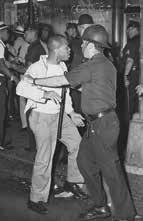
November 21, 1964
The Verrazano Narrows Bridge opens connecting Staten Island and Brooklyn and offering commuters an alternate route to and from New Jersey. With a span of 4,260 feet, the Verrazano Narrows Bridge became the longest suspension bridge in the world at the time of its completion.
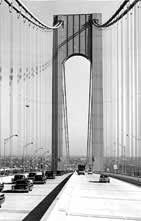
January 1, 1966
John V. Lindsay becomes the mayor of New York on the same day that a mass transit strike, led by two unions shuts down the city and most of its trade. The strike lasted 12 days until workers negotiated a 15% pay raise with the new mayor. However, this was just the first of many strikes to come in the following years of the decade including Broadway’s three-day walkout, a seven-month teacher strike, and a nineday sanitation strike in 1968.
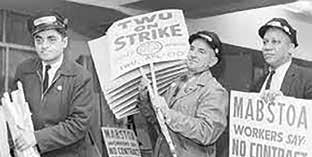
The Stonewall Riots began early on the morning of June 28, 1969 after New York City police raided the Stonewall Inn, a gay bar in Greenwich Village, New York City. The conflict that ensued between bar patrons and residents resulted in six days of protests and violent encounters in areas surrounding the bar on Christopher Street. The Stonewall Riots ultimately served as the impetus for the gay rights movement in the United States.
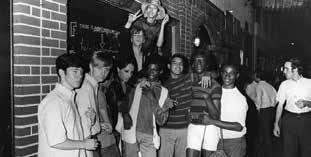
Economic and social conditions in New York City declined in the 1960’s and 1970’s. Middle-class residents increasingly fled to the suburbs. Blue-collar neighborhoods deteriorated as waves of crime and drugs took over the city; and social unrest was underscored by strikes and riots, as the city barreled towards a fiscal crisis.
“We didn’t really know what to do,” said Peter Kalikow about his and his father’s development plans after the company separation.
Eventually, Peter Kalikow identified a promising property for sale in the up-and-coming Great Neck, Long Island, a suburb in Nassau County. First generations of families who moved there in the 1930’s and 1940’s now had adult children who wanted to remain in the area. However, they were not looking to own houses, making rental apartments a preferred option.
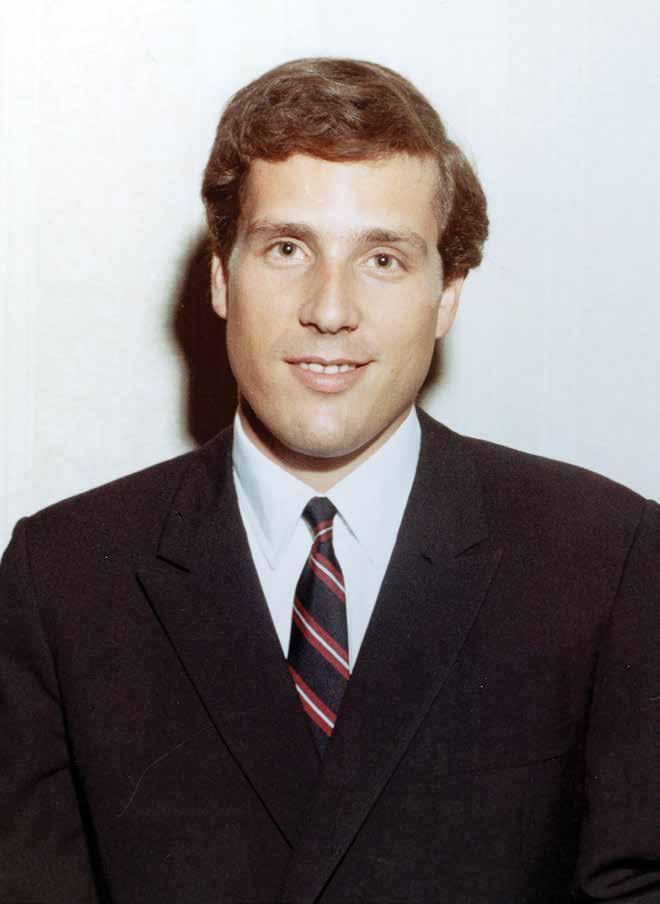

Peter Kalikow had previous experience developing office properties and he thought managing an apartment building would be similar, but it turned out to be more complex than he imagined. “I had no idea what I was doing,” admitted Kalikow of his first real solo project. “I learned a lot of lessons.” Originally projected for $3.2 million, the project ended up costing $4.2 million, because of overruns. At one point during the project, Peter Kalikow began to doubt if he should even complete the building. That’s when his mother told him, “I may not know much about real estate, but I do know that a half-finished building is worth zero, and a finished building is at least worth something.”
He completed the project. According to Peter Kalikow, the moment he truly knew he had developed a good property was when Nathan A. Barell, the same banker who put Fred Kronish and Joseph Kalikow in business more than 30 years earlier, wanted to rent an apartment in the building, telling him: “This is a building that Joe Kalikow would be proud of.”

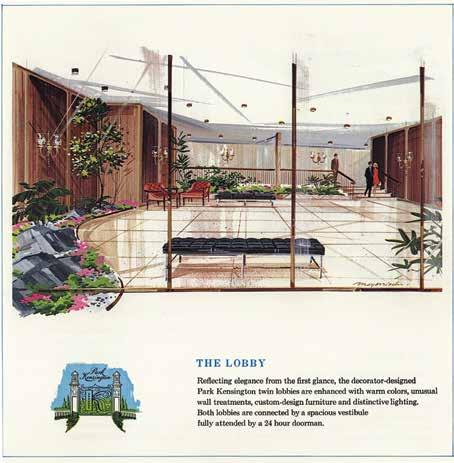

The 1900’s marked the Progressive Era in NYC, a period defined by an increase in reforms and government regulation in response to the scandal and corruption of the Gilded Age. During this time period the city population stood at more than 3.4 million (compared to one million in 1875) and continued to surge as development grew and immigrants fled to Ellis island, which had opened eight years prior, in search of political and religious freedom.
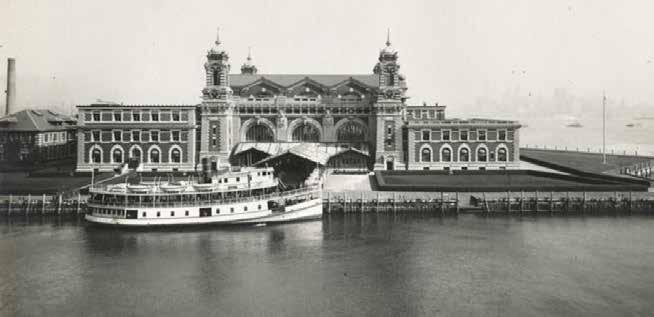
June 1902
The Flatiron Building, one of New York City’s first skyscrapers is constructed. Designed by architect Danial Burnham, the unique triangular shape allowed the building to fit perfectly in the plot located at the intersection of Fifth Avenue and Broadway.


1902
Macy’s Department Store on Herald Square opens making it the world’s largest department store with 2.5 million square feet of real estate. It spreads an entire city block and boasts 11 floors.
April 22, 1903
The New York Stock Exchange building opens at a cost of $4 million. The trading floor was one of the largest volumes of space in the city at the time, measuring 109 feet by 140 feet, with a skylight set into a 72-foot-high ceiling.


December 20, 1903
The Williamsburg Bridge opens. At the time it was the longest suspension bridge in the world, carrying rail, trolley, carriages and pedestrians. The Williamsburg Bridge was one of the last major bridges designed for horse and carriage.
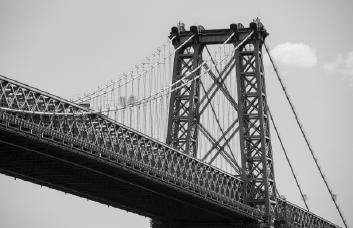
1904
The iconic One Times Square Building is completed. The 26-story building at the center of Times Square was originally built as the headquarters of The New York Times. In 1907, the first ever New Year’s Eve Ball Drop took place, becoming an annual New Year’s Eve tradition celebrated around the world.
October 7, 1904
The first subway opens, launching its significance into New York City culture. Under Mayor George B. McClellan, the first line ran through 28 stations traveling at a speed of 9.8 miles, beginning in City Hall in lower Manhattan and finishing at 145th Street and Broadway in Harlem.
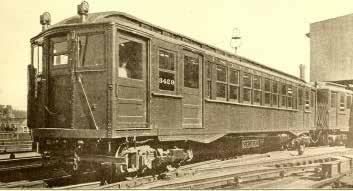
Peter Kalikow recognized that HJ Kalikow needed to move their offices into Manhattan to fulfill his vision of becoming an industry leader. At the time that he entered the Manhattan market, Kalikow explained, over 100 of the Fortune 500 companies were headquartered in Manhattan. “They were all here. You had to be here,” said Daniel Cremins, Executive Vice President of HJ Kalikow.
Peter Kalikow located a mansion for sale at 733 Park Avenue in 1970. After three months of difficult negotiations, he acquired his first property in Manhattan for $1.6 million. Kalikow proceeded to tear it down to prepare the lot for an apartment building.
That sale would change everything, whether he knew it or not at the time.

Shortly after he bought the site, Peter Kalikow’s father and mother were at El Morocco, a popular New York City nightclub, one Saturday evening, when a man approached Harold about buying the lot at 733 Park Avenue. Harold explained that his son owned it and that it was not for sale. The man was persistent, however, and continued to make offers, each one higher than the last. Eventually at $2.7 million, Peter Kalikow could not resist and agreed to sell. Almost immediately after he did, the real estate market crashed.
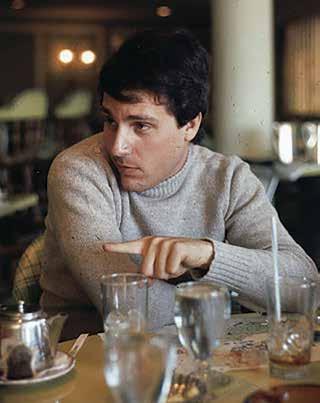
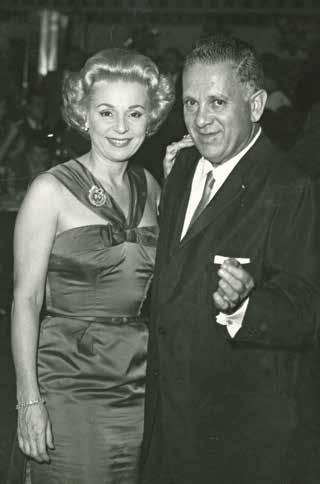
“ Sometimes it’s better to be lucky than smart.
Peter Kalikow about the 733 Park Avenue deal.
Using the market and profits from 733 Park Avenue to his advantage, Peter Kalikow purchased three more sites in 1971. By 1973, he had opened the doors to three new luxury apartment buildings: Kenilworth (178 East 80th), East Winds (345 East 80th), and Corniche (301 East 87th).
Although Kalikow suffered some overruns and setbacks on the Kenilworth, he was able to recoup his losses by selling another site when the market cooled.

Excerpts from the brochure featuring additional features of the Corniche.
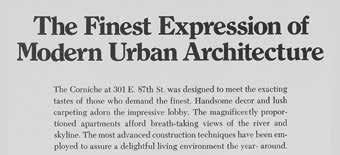
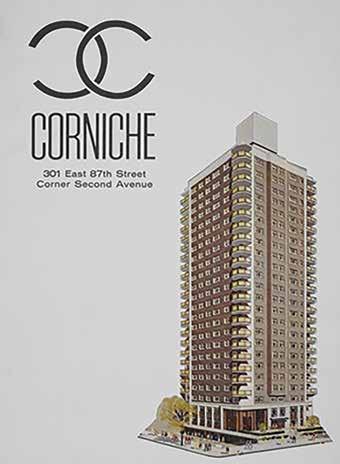
“ When we put the flag on the 33rd floor of the East Winds my dad was so proud.”
Peter Kalikow
Artistic Rendering of the Kenilworth and advertisement as appeared in The New York Times (August 20, 1972)


The East Winds was one of the most profitable buildings Peter Kalikow developed.
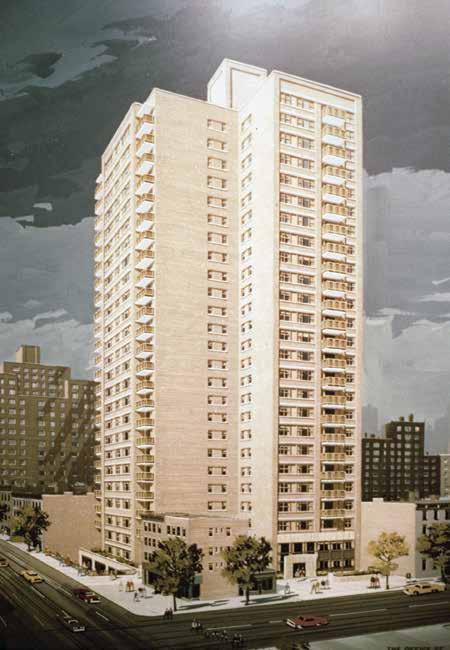
1973 was also the year that Peter Kalikow formally became the president of H.J. Kalikow. While he had been leading the company during the years prior, he felt it was best to wait until he was 30 to become the official head of the company.
Two years earlier, on June 20, 1971, Peter Kalikow married Mary Typaldos Jacobatos. They had two children together: Nicholas Alexander (Feb. 20, 1980) and Kathryn Harold (March 23, 1986).
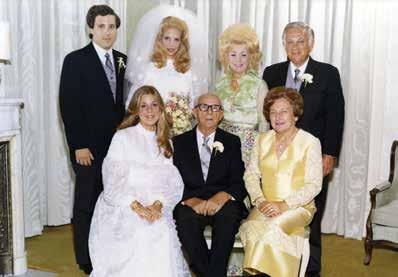

Harold Kalikow remained a partner until his death in 1983. Peter attributes much of his early success to his father, stating he was, “irreplaceable” when it came to real estate advice.
Peter and Mary pose for a picture with their parents and Peter’s younger sister Penny.
“It wasn’t so much the money… it helps… but it was my father’s confidence in me that I knew what I was doing.”
Peter Kalikow
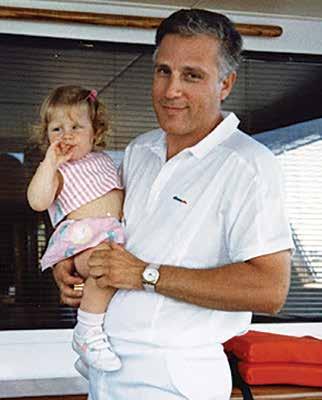
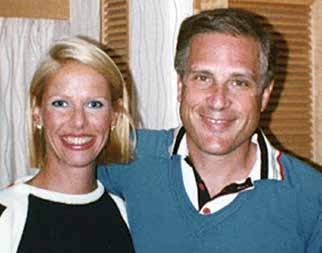

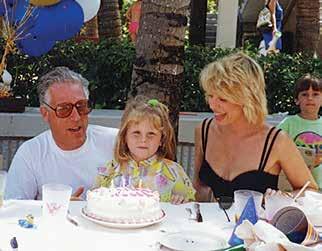



Need Caption
Need Caption

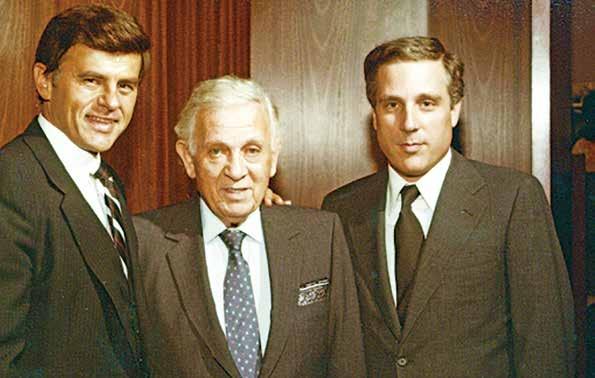
Peter hoped to continue building one to two apartment buildings at a time so that he could open up a new one every year. However, given that the rental market was unfavorable in the 1970s, he was forced to sit tight and wait for his next opportunity.
“The market just didn’t go with me,” said Peter, explaining how he had become more cautious during this time because the buildings he was developing were getting larger, elevating the risk each time.
An opportunity arose in 1974 when Kalikow purchased two more sites at 303 East 83rd (Camargue) and 220 East 65th (Concorde). He bought a third site too, but got nervous and eventually sold it, which turned out to be another “lucky break.” The Camargue opened its doors in 1977, and the Concorde followed in 1978.

Although the real estate market was risky at the time, Peter joked that all his family ever knew how to do was keep building. “If you waited for the right time you would never build anything,” Kalikow said.
So that’s what he did. He purchased another site in 1977.
“ With enough time and money every real estate deal works out.”
Joseph KalikowThe 1970’s marked a period of financial crises in New York City and the real estate market.


Theproperty Kalikow bought had been owned by real estate investor Sol Goldman, who had originally planned to demolish the three townhouses on the site (which dated back to 1899) to make way for a 25-story luxury apartment building.
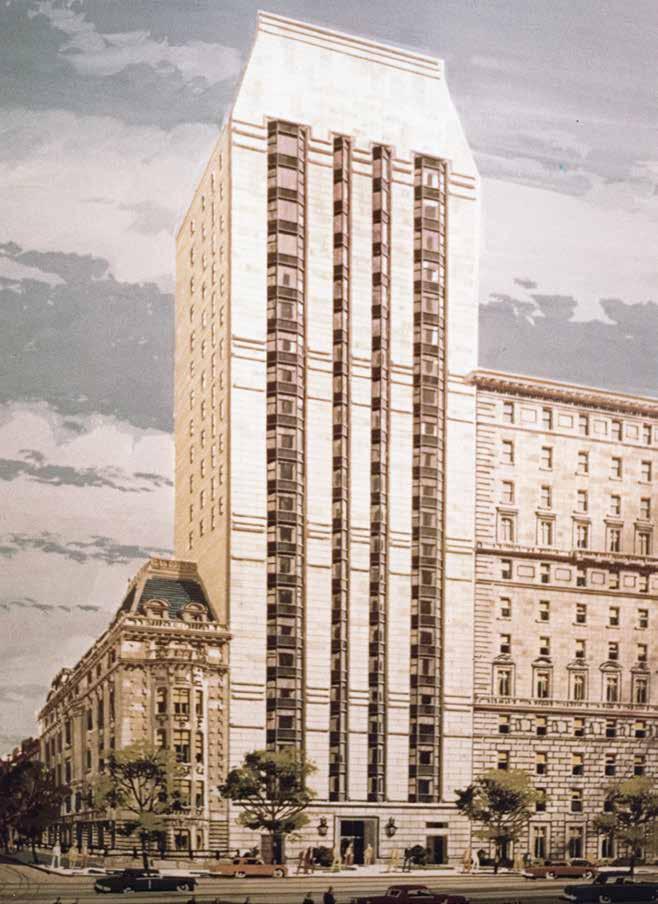
Goldman’s plans were met with strong opposition from the community, because they were fighting to get the site designated a historic district by the New York City Landmarks Preservation Commission. The Commission denied the case and Goldman proceeded to demolish two of the town houses. Instead of moving forward however, Goldman sold the empty lot along with the remaining town house to HJ Kalikow in 1977.
Aware of the backlash that Goldman faced, Kalikow announced that he would make the new building compatible with the design of the surrounding buildings on Fifth Avenue. At the time he purchased the property, there was another Landmarks Commission public hearing regarding the site set to be held on March 8, 1977.
While the hearing eventually resulted in the establishment of the Metropolitan Museum Historic District, Kalikow had already begun demolition of the site on March 1, one week before the hearings began.

Since he had already torn down the last townhouse before the ruling, the court ordered that the neighborhood group, along with the Landmark Preservation Commission, and HJ Kalikow, had to all review and agree on the building plans to make sure it was acceptable to each party and that it would “harmonize” with the surrounding architecture.
World famous architects Philip Johnson & John Burge were hired to design the exterior, while Philip Birnbaum, the original designated architect on the project, carried out his initial designs for the interior.
The building was completed in 1978 and received high praise for its embrace of traditional architecture, while still adding something new and interesting to the design. The structure served as a quintessential example of how to develop largescale new construction projects in historic areas.
Peter and Mary moved into the apartment building shortly after it was completed and would begin to raise their family there. Although they mainly reside in Purchase, New York, today, they still own the original apartment at 1001 Fifth Avenue.
The revenue generated by 1001 Fifth Avenue would enable Peter to advance with his next endeavor.
A newsletter from Douglas Elliman-Gibbons & Ives detailing the new landmark on Fifth Avenue.
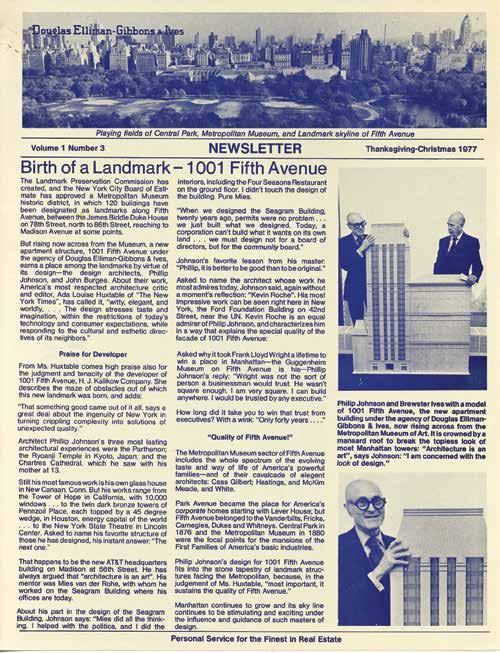

The 1900’s marked the Progressive Era in NYC, a period defined by an increase in reforms and government regulation in response to the scandal and corruption of the Gilded Age. During this time period the city population stood at more than 3.4 million (compared to one million in 1875) and continued to surge as development grew and immigrants fled to Ellis island, which had opened eight years prior, in search of political and religious freedom.

June 1902
The Flatiron Building, one of New York City’s first skyscrapers is constructed. Designed by architect Danial Burnham, the unique triangular shape allowed the building to fit perfectly in the plot located at the intersection of Fifth Avenue and Broadway.


1902
Macy’s Department Store on Herald Square opens making it the world’s largest department store with 2.5 million square feet of real estate. It spreads an entire city block and boasts 11 floors.
April 22, 1903
The New York Stock Exchange building opens at a cost of $4 million. The trading floor was one of the largest volumes of space in the city at the time, measuring 109 feet by 140 feet, with a skylight set into a 72-foot-high ceiling.


December 20, 1903
The Williamsburg Bridge opens. At the time it was the longest suspension bridge in the world, carrying rail, trolley, carriages and pedestrians. The Williamsburg Bridge was one of the last major bridges designed for horse and carriage.

1904
The iconic One Times Square Building is completed. The 26-story building at the center of Times Square was originally built as the headquarters of The New York Times. In 1907, the first ever New Year’s Eve Ball Drop took place, becoming an annual New Year’s Eve tradition celebrated around the world.
October 7, 1904
The first subway opens, launching its significance into New York City culture. Under Mayor George B. McClellan, the first line ran through 28 stations traveling at a speed of 9.8 miles, beginning in City Hall in lower Manhattan and finishing at 145th Street and Broadway in Harlem.

In the late 1970’s, HJ Kalikow relocated their offices to 90 Park Avenue, situated diagonally across from 101 Park Avenue.
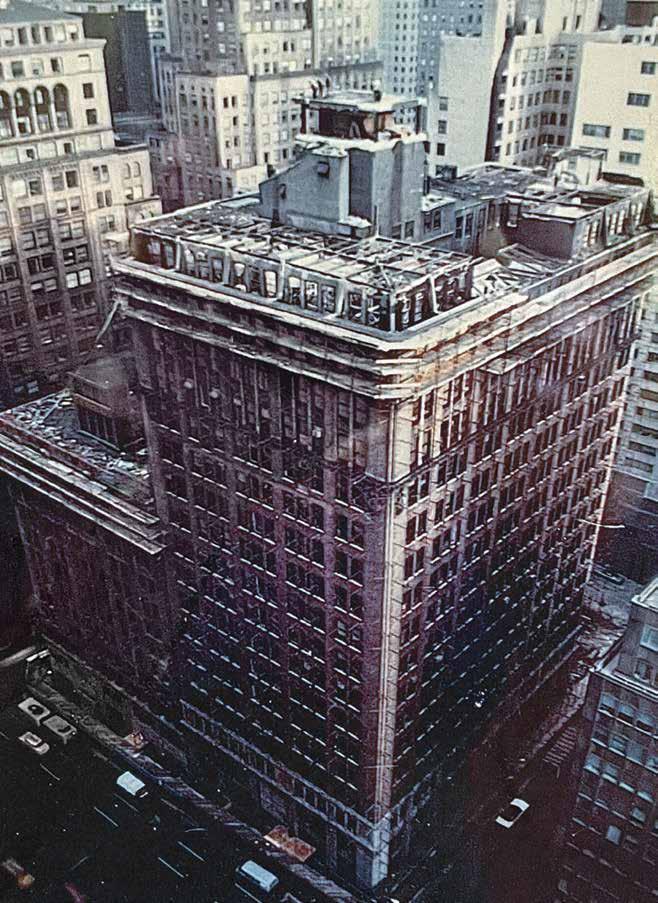
The property at the time consisted of five buildings: three of twelve stories, two of six stories and a parking garage. The site was owned by Chase Manhattan Bank. Kalikow, seeing the dated buildings from his office across the street, envisioned their potential.
Crime was still at a high in New York City and Midtown was, as Kalikow puts it, “a terrible area.” But he had a vision beyond that. Once Edward I. Koch was elected Mayor of New York City in 1978, Kalikow was hopeful that Koch’s leadership would improve living conditions and lower crime rates.
Despite the fiscal crisis of NYC in the 1970’s, Peter Kalikow predicted a strong market to follow in the 1980’s (The New York Times: March 26,1979).
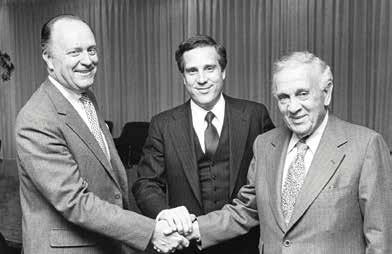

The 101 Park Avenue Mortgage Closing in the Chase Boardroom at 1 Chase Manhattan Plaza. (Top row right to left: David Lavapour, Daniel Cremmins, Irve Walter, unknown, unknown, unknown. Bottom row right to left: unknown, Peter Kalikow, Conrad Stevenson, Greg Brennan, Harold Kalikow, Jerry Shreiger. )
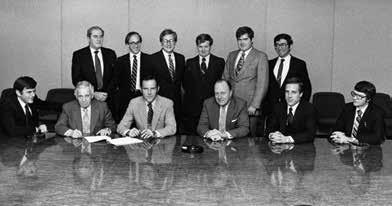 Conrad Stevenson, Peter Kalikow and Harold Kalikow shake hands at the 101 Park Avenue mortgage closing.
Conrad Stevenson, Peter Kalikow and Harold Kalikow shake hands at the 101 Park Avenue mortgage closing.


Concept art for a dining area inside the Park Avenue office building. The finished result was Club 101, an exclusive luncheon club and event space for the business community.


Another key factor that influenced his interest in the site was its proximity to Grand Central Terminal. According to Peter, when his grandfather, Joseph began construction on a site, Joseph’s wife Anna would visit the site and her first question would be, “where’s the subway station?” This mindset stuck with Peter over the years, leading him to build near transit hubs.
Peter purchased the site in 1978 “as is” for $13 million. He wanted to expand into commercial properties. Although office buildings are generally associated with more risk, there is usually more potential, said Kalikow.
“Offices are market driven and when you hit it right the benefit is substantial,” he explained.
Kalikow demolished the existing buildings and built a 49-story office building. The property stood out for its innovative shape (two chiseled corners of the would-be rectangular tower floors to create eight corner offices per floor, rather than four) and reflective glass. New Yorkers referred to Peter Kalikow and architect Eli Attia’s design as an architectural masterpiece.

In 1982, Kalikow received the Award for Excellence by the Building Owners and Managers Association of Greater New York for the development of 101 Park Avenue. He had previously been awarded the Young Master Builder Award (1980) and the Golden Circle Award (1981) for his excellence in luxury real estate development.

Occupancy of the building did not begin until the spring of 1982, but 101 Park Avenue received immediate interest from companies drawn by the location and promise of the design quality.


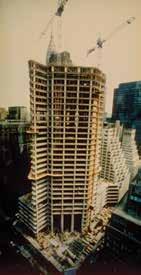


By 1980, two thirds of the more than 1,200,000 square feet of office space had been leased.

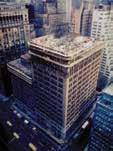



Some notable tenants of 101 Park Avenue have been Morgan Stanley; Fox Rothschild; Tiger Management; Nespresso; The American Kennel Club; Booz Allen Hamilton; and Foote, Cone & Belding.
Another noted feature of 101 Park Avenue was its modern elevator system, the Otis Elevonic 101, the first elevator system that was fully microprocessor-controlled with silicon-controlled rectifier motor drives. This efficient system, introduced by Otis from 1977 to 1978, sent empty cars to requested floors and occupied cars bypassed those floors. 101 Park Avenue has continued to update its elevators since then; as of 2016, all of the elevator mechanical systems have been fully modernized, with an Otis elevator technician on site during business hours.

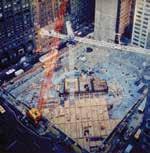
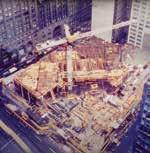

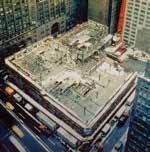
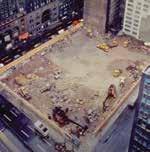
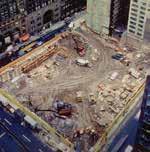

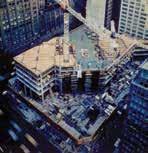


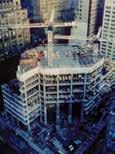
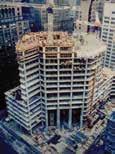



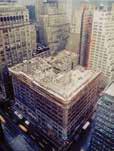

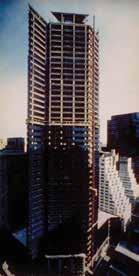

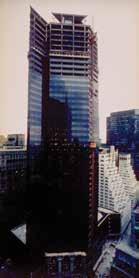
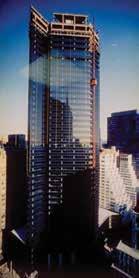
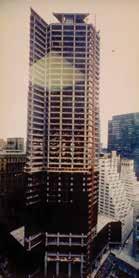
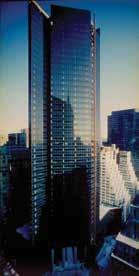

In 1982, Kalikow received the Award for Excellence by the Building Owners and Managers Association of Greater New York for the development of 101 Park Avenue. He had previously been awarded the Young Master Builder Award (1980) and the Golden Circle Award (1981) for his excellence in luxury real estate development.

HJ Kalikow still owns and manages the building where the company is headquartered.
The significant architectural accomplishment of 101 Park Avenue is, perhaps, best summarized in this letter, sent to an editor of The New York Times in April of 1982 in response to an earlier article mentioning Eli Attia’s architectural work.
“
On my daily morning walk up Park Avenue, I had the pleasure of seeing this building evolve, with never a moment of disappointment.
I think the building is a triumph, a masterpiece. Attia and Kalikow have given to the Grand Central/Murray Hill area not simply a building, but an enduring beautiful articulation of the evolution of the life of this city and its people.”
M.C. PARSONS, Manhattan
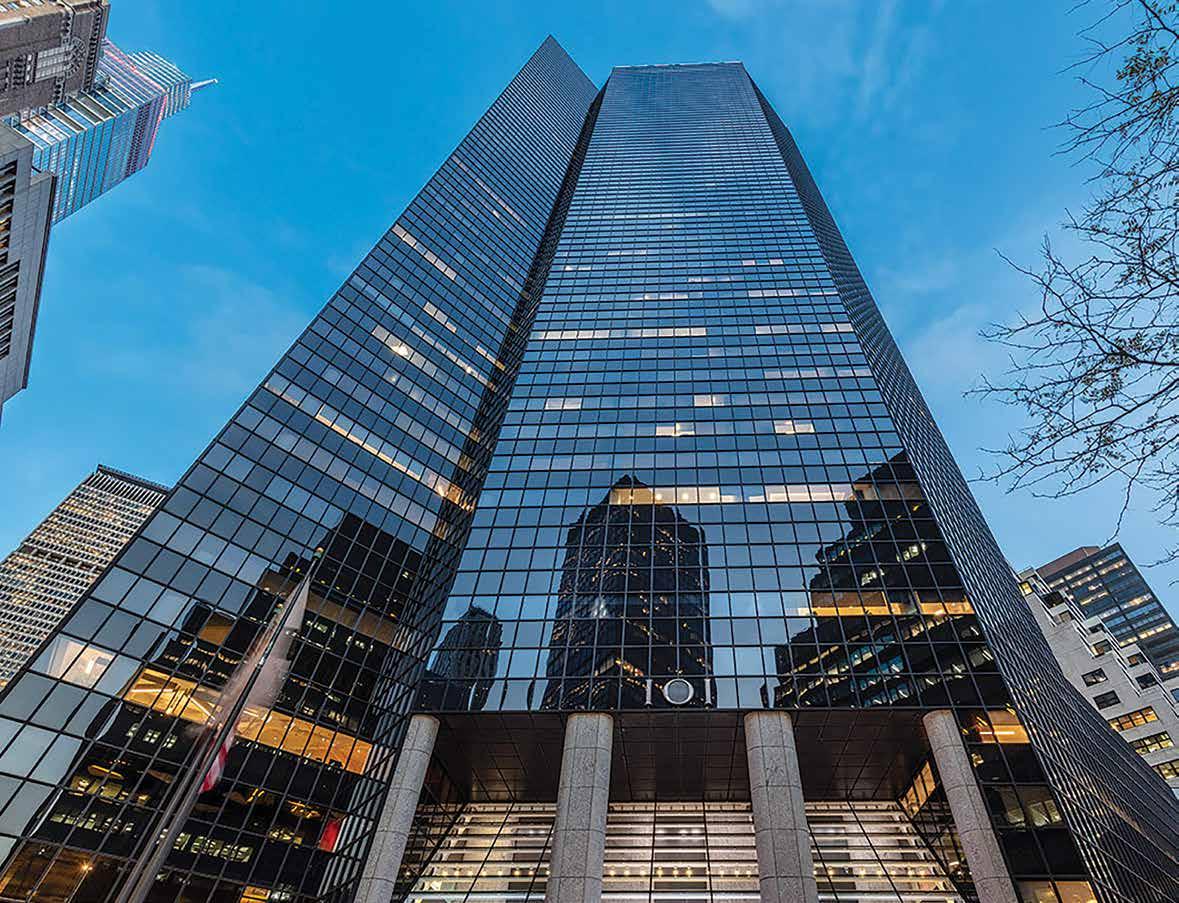

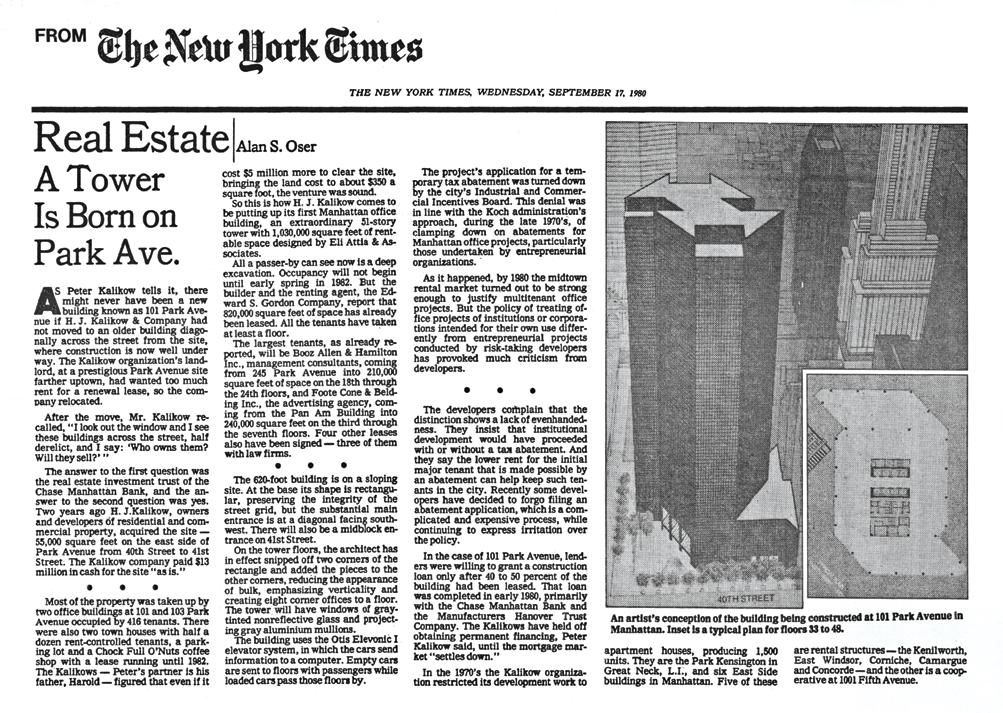
Kalikow continued making ambitious real estate deals with the purchase of 195 Broadway, a site known for its historical legacy and magnificent Greek-inspired architecture. The current 29-story building was originally commissioned in 1909 by AT&T president Theodore Newton Vail, after the company’s purchase of Western Union. It was constructed between 1912 and 1924 with a series of three sections. It officially opened in 1918.
195 Broadway was designed by architect William W. Bosworth. Its most notable features are Doric and Ionic columns and Greek ornamentation.
The lobby was covered with gray and white Italian marble walls and floors. It featured several decorations designed by sculptors Paul Manship and Gaston Lachaise, including the elevator doors, floor panels, bronze chandeliers, and drinking fountains6.
In addition to its grand architecture, 195 Broadway was historically significant as the site of the first transcontinental telephone call, the first transatlantic telephone call, and the first Picturephone(6) call between cities.
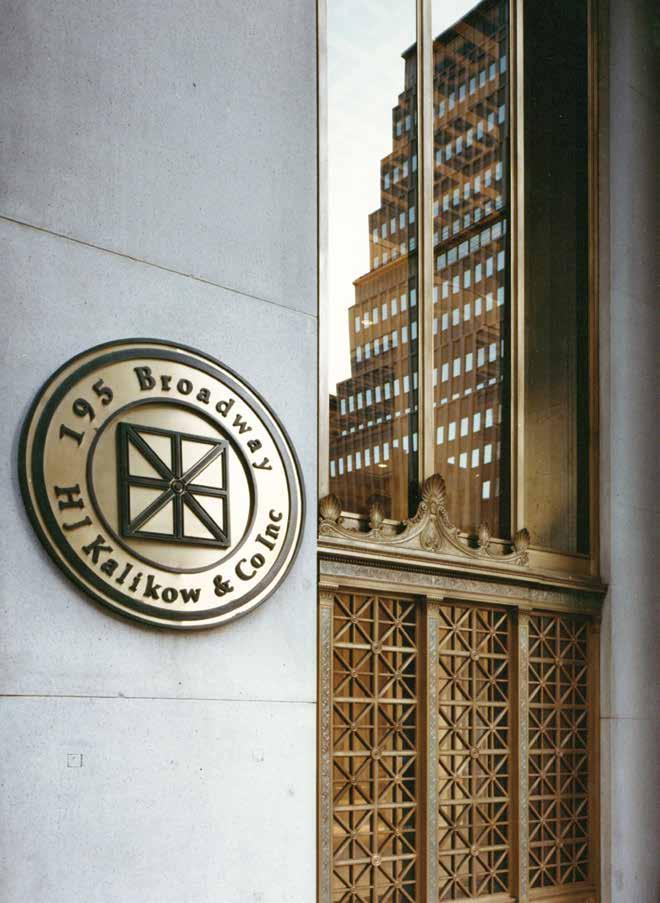
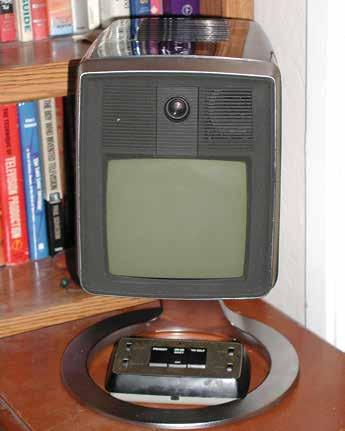
AT&T created the Picturephone in 1963, an experimental videophone system, similar to FaceTime today. It was first introduced to the public at the 1964 New York World’s Fair before going commercial in 1970. Despite the popularity of apps like FaceTime and Skype today, the Picturephone was received poorly by the public at the time leading AT&T to discontinue the service in the late 1970’s.

In 1982, the Bell System was broken up into seven smaller companies. Shortly after, AT&T announced its relocation to 550 Madison Avenue and the sale of 195 Broadway.
In May 1983, Peter purchased 195 Broadway, along with the adjoining properties at 47 Church Street and 172-174 Fulton Street, for $73 million. AT&T officially moved out in 1984 removing several of the bronze decorations and sculptures from the lobby, including the famous statue Spirit of Communication, as well as marble from the floors and walls. They used the proceeds from the sale to start a charity: the AT&T Foundation.
In 1984, Kalikow invested $3 million into restoring the building, striving to maintain the historical integrity and original design of the building’s exterior and lobby, while modernizing its spaces and mechanical functions. Architect Eli Attia headed the project. HJ Kalikow rented out the office spaces to tenants such as Morgan Stanley; The building was sold to L&L Holding Company in 2004.
In 2006, the exterior of the building and the first floor received landmark status by the New York City Landmarks Preservation Commission.
AT&T replaced the original marble and decorations with replicas as part of their restoration obligation during the sale to maintain the artistic integrity of the building.
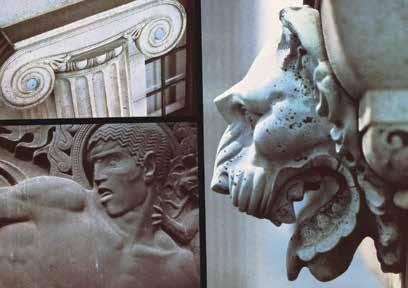

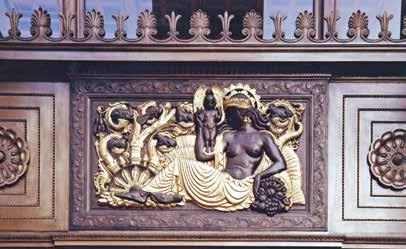
Many of the features of the building such as the Doric and Ionic style columns and various Greek ornamentation were inspired by classical Greek buildings like the Parthenon.

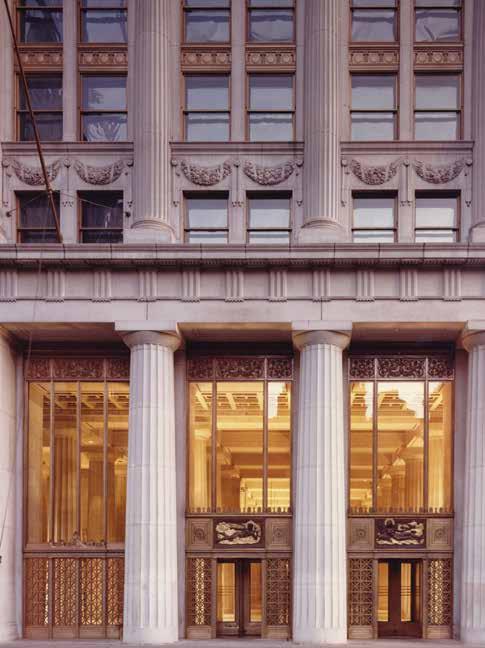
The 195 Broadway site included connecting properties on Church and Fulton Street across from the World Trade Center. Peter Kalikow developed these properties as his next project.
He originally planned to create a combined office building and hotel. However, hotel-chain executives and market studies raised doubts as to whether hotel rooms would be profitable at that location.
Kalikow then changed his plans for the site to a 29-story office building. In order to make the office space work, he planned a floor-by-floor expansion of 195 Broadway, but zoning issues and complications with the air rights to historical landmark St. Paul’s Chapel (situated behind the hotel) made the appropriate approvals and permits from the city a challenge.
Rather than confronting the daunting zoning challenges, Kalikow returned once again to the hotel concept.
He wanted to, “make a statement that had nothing to do with 195” and proceeded to develop a 58-story hotel “as-of-right” building, free of scrutiny from the City Planning Commission and the Board of Standards and Appeals.
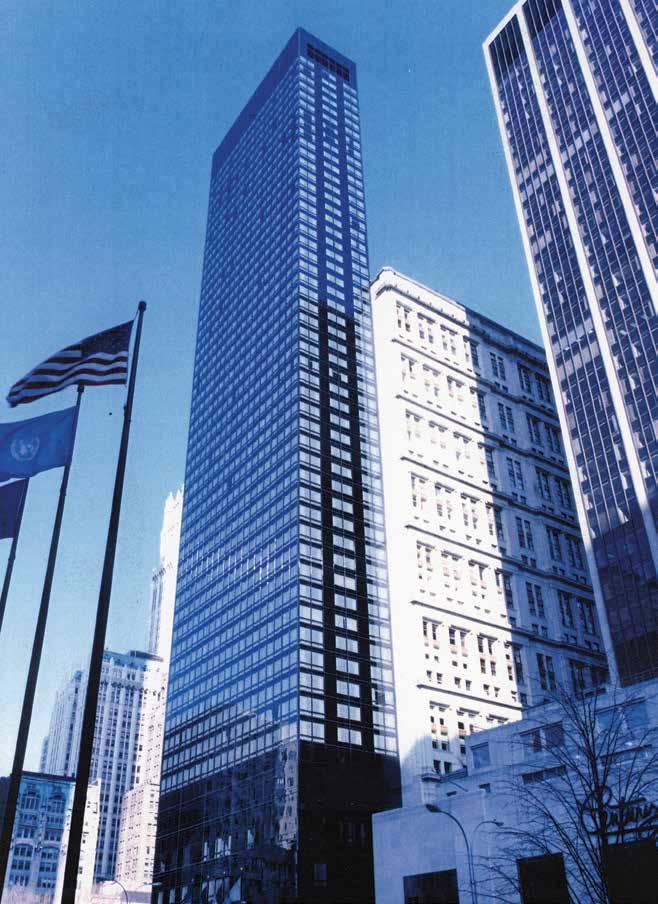
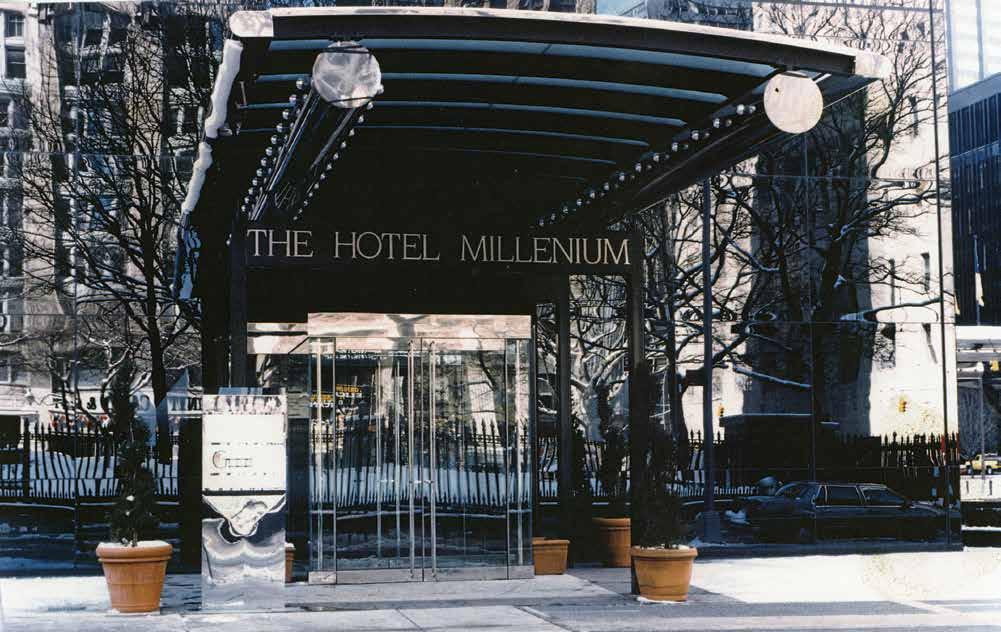
Kalikow selected the name “Millenium” for the hotel, deliberately misspelling it rather than using the conventional spelling (millennium), to be more distinctive and easier to trademark.
The project cost $200 million and opened on June 2, 1992. Around the same time, Kalikow went personally bankrupt (after his brief ownership of The New York Post) and was forced to sell the hotel to a Singapore-based company, City Developments Limited (CDL).

Hilton began managing the property as “The Millenium Hilton,” keeping the misspelling of the word millennium.
During the terrorist attacks on September 11, 2001, the hotel sustained severe damage, and was closed for eighteen months for extensive repairs. The hotel reopened on May 5, 2003. Workers recovered the American flag that had been flying outside during the attacks and rehung it in the lobby where it currently stands today.

In 2017, the hotel was renamed “The Millennium Hilton New York Downtown.” By using the conventional spelling of millennium, CDL subsidiary, Millennium & Copthorne Hotels, was able to market the building with the rest of their properties.
Hilton managed the hotel until January 2022 and it is now called “Millennium Downtown New York City.”
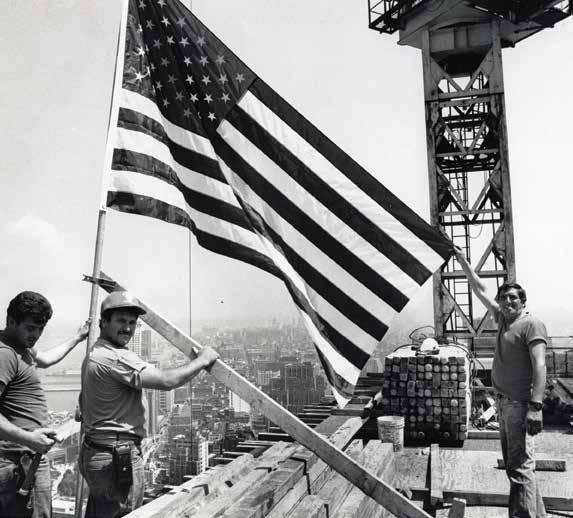
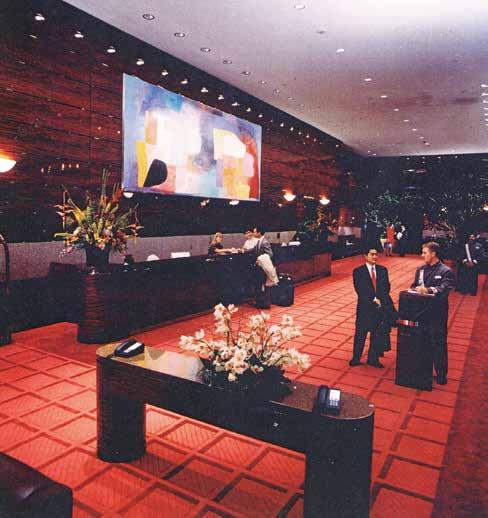
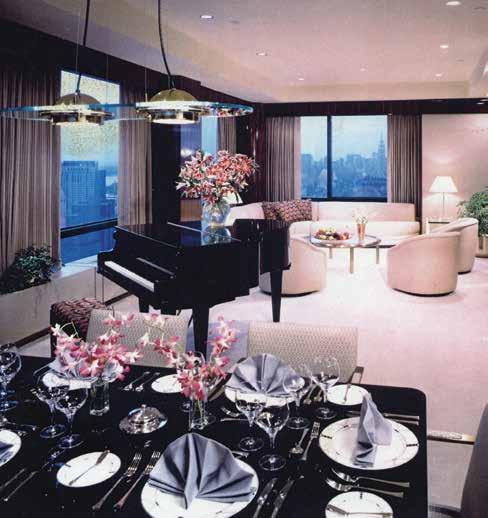
The 1900’s marked the Progressive Era in NYC, a period defined by an increase in reforms and government regulation in response to the scandal and corruption of the Gilded Age. During this time period the city population stood at more than 3.4 million (compared to one million in 1875) and continued to surge as development grew and immigrants fled to Ellis island, which had opened eight years prior, in search of political and religious freedom.

June 1902
The Flatiron Building, one of New York City’s first skyscrapers is constructed. Designed by architect Danial Burnham, the unique triangular shape allowed the building to fit perfectly in the plot located at the intersection of Fifth Avenue and Broadway.


1902
Macy’s Department Store on Herald Square opens making it the world’s largest department store with 2.5 million square feet of real estate. It spreads an entire city block and boasts 11 floors.
April 22, 1903
The New York Stock Exchange building opens at a cost of $4 million. The trading floor was one of the largest volumes of space in the city at the time, measuring 109 feet by 140 feet, with a skylight set into a 72-foot-high ceiling.


December 20, 1903
The Williamsburg Bridge opens. At the time it was the longest suspension bridge in the world, carrying rail, trolley, carriages and pedestrians. The Williamsburg Bridge was one of the last major bridges designed for horse and carriage.

1904
The iconic One Times Square Building is completed. The 26-story building at the center of Times Square was originally built as the headquarters of The New York Times. In 1907, the first ever New Year’s Eve Ball Drop took place, becoming an annual New Year’s Eve tradition celebrated around the world.
October 7, 1904
The first subway opens, launching its significance into New York City culture. Under Mayor George B. McClellan, the first line ran through 28 stations traveling at a speed of 9.8 miles, beginning in City Hall in lower Manhattan and finishing at 145th Street and Broadway in Harlem.

After three generations of Kalikow men sitting at the head of the boardroom, Kathryn Kalikow, daughter of Peter and Mary, is proud to represent the fourth generation of the Kalikow family and continue the legacy of HJ Kalikow & Co.
Kathryn joined the company in 2021, and became a principal shortly thereafter. She has headed large deals, including the most recent Five Iron Golf contract at 101 Park Avenue.
This indoor, urban golf experience will be located on the third floor of the building and will have a designated entrance on 41st Street. Adding to 101 Park’s various amenities, the 30,000 square foot space will include virtual golf simulators, widescreen TV’s, and a full service bar and restaurant.
“Few companies remain family owned for a century, yet as a leader of real estate development and management in New York City for almost 100 years, HJ Kalikow has endured as an outstanding presence in an unpredictable industry. As one of the few surviving commercial real estate dynasties in New York, HJ Kalikow continues to look to the future to expand its legacy for generations to come.”
Vision, innovation and a little luck were key to sustaining the corporation in its first century. Those elements of success are no less necessary today as world events and market volatility provide ever new challenges for the years ahead.

(1) The Israel Zion Hospital, later known as the Maimonides Hospital after a merger with Beth Moses Hospital in 1947, played an instrumental role during the outbreak of the 1918 flu epidemic.
(2) Borough Park Hebrew Institute, founded in 1916, was the first Yeshiva in Borough Park, Brooklyn.
(3) The Normandy and Lafayette buildings were named after the 1930’s French ocean liner the SS Normandie, regarded as the largest and fastest passenger ship at the time. During WWII, U.S. officials took hold of the ship in New York and renamed it USS Lafayette before it caught on fire and capsized while being converted to a troopship in 1942.
(4) In 1940 Congress enacted the Selective Training and Service Act in which all males between the ages of 21 and 35 were ordered to register for the draft. As World War II progressed, the draft age was lowered to 18 and men were called to service not by lottery number but by age, with the oldest going first.
(5) The Guadalcanal campaign, led by the U.S. Marines, was the first major land offensive of the Allied powers, against Japan. It represented a turning point in the Allies’ operations from defensive to offensive and gave them the strategic advantage over Japan in the Pacific Theater.
(6) AT&T created the Picturephone in 1963, an experimental videophone system, similar to FaceTime today. It was first introduced to the public at the 1964 New York World’s Fair before going commercial in 1970. Despite the popularity of apps like FaceTime and Skype today, the Picturephone was received poorly by the public at the time leading AT&T to discontinue the service in the late 1970’s.